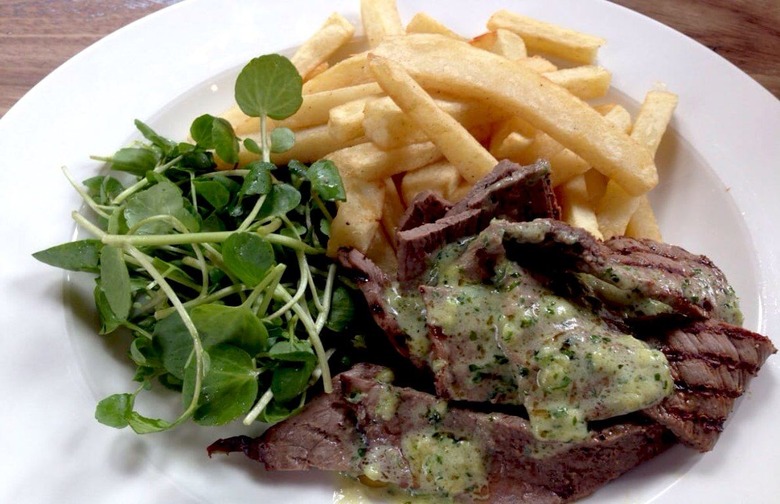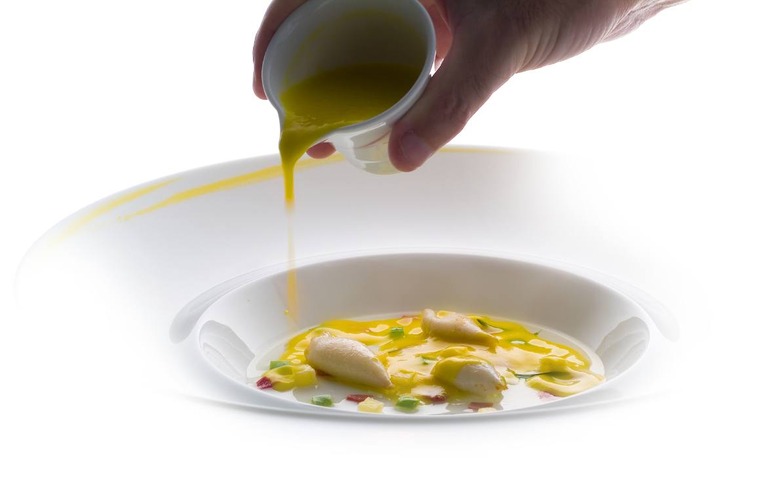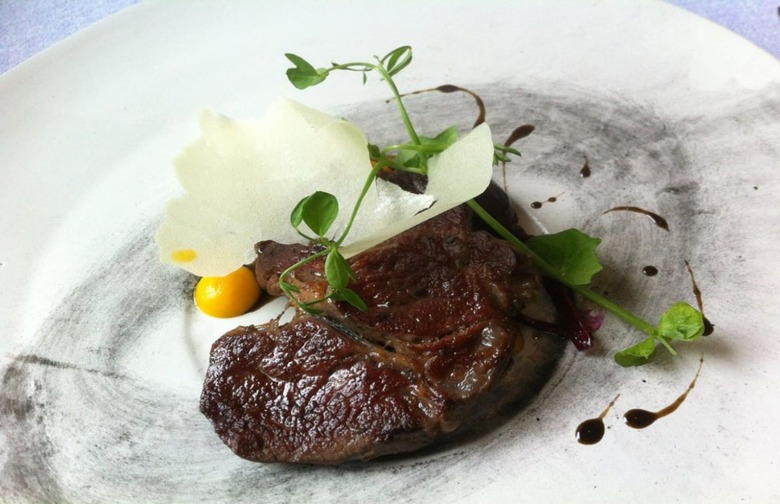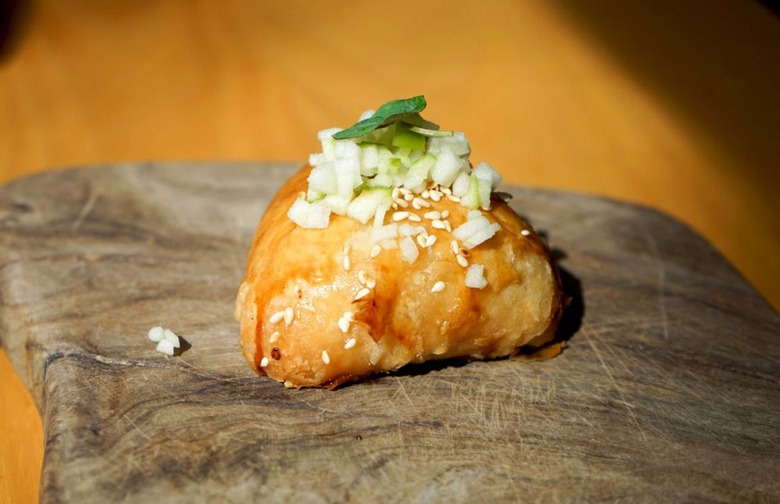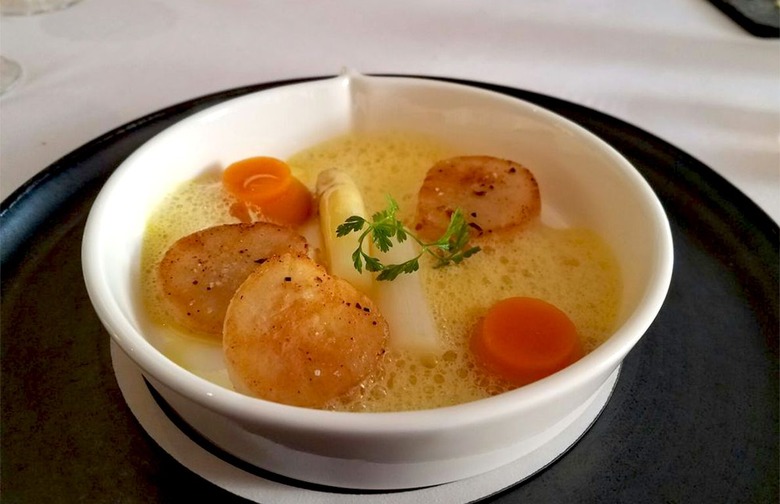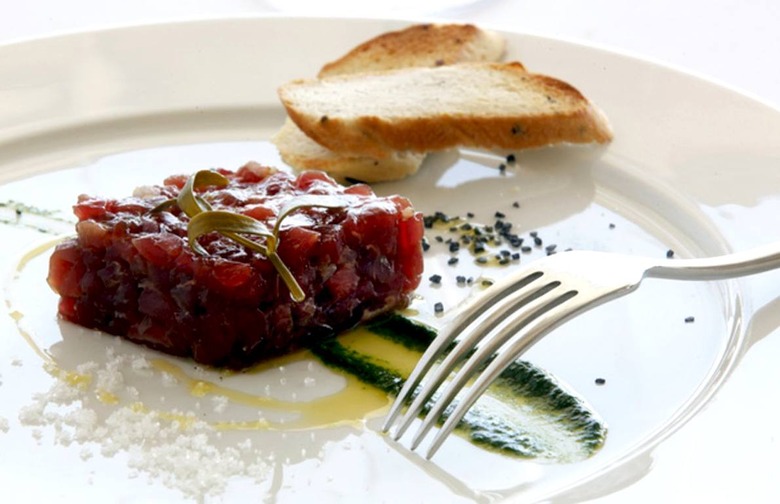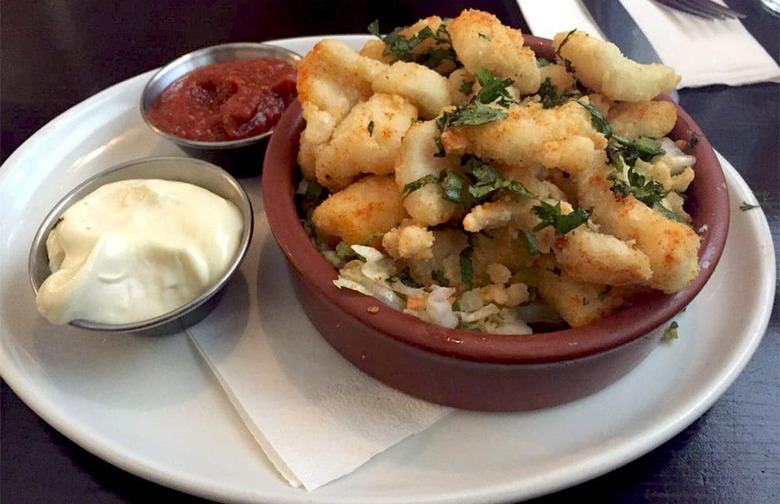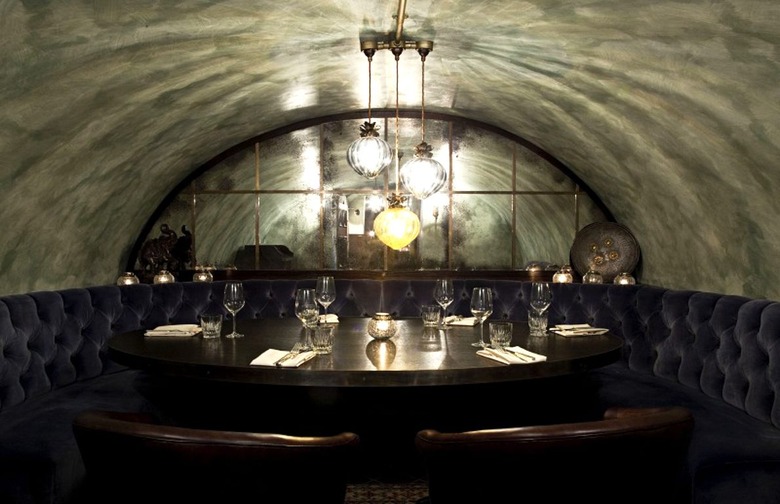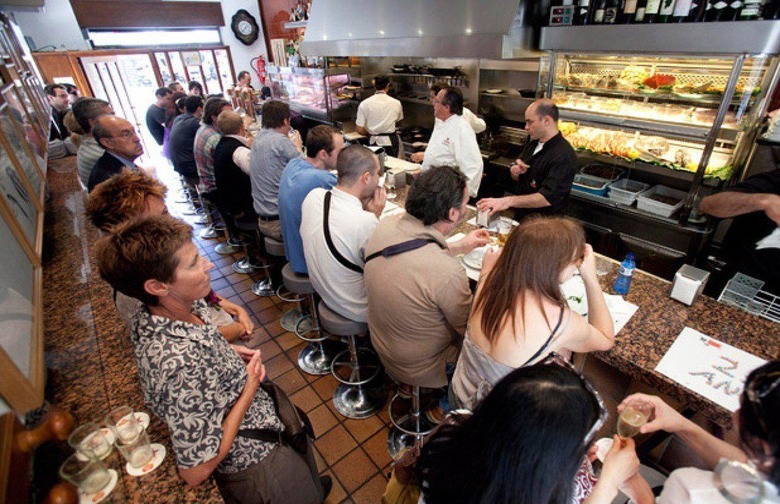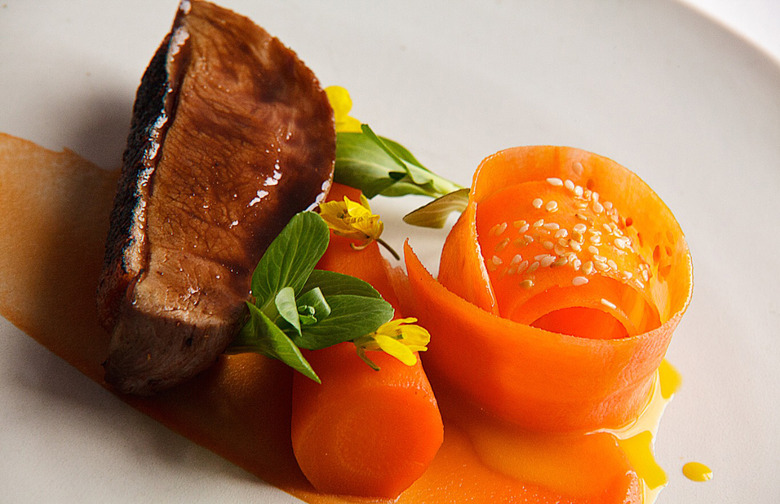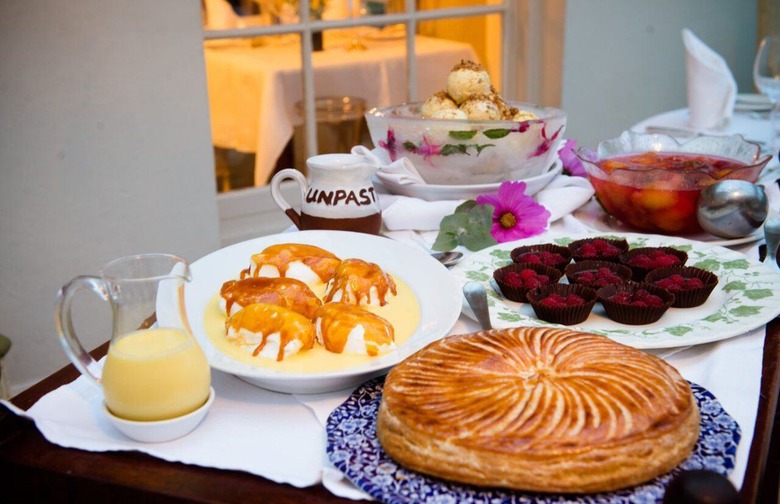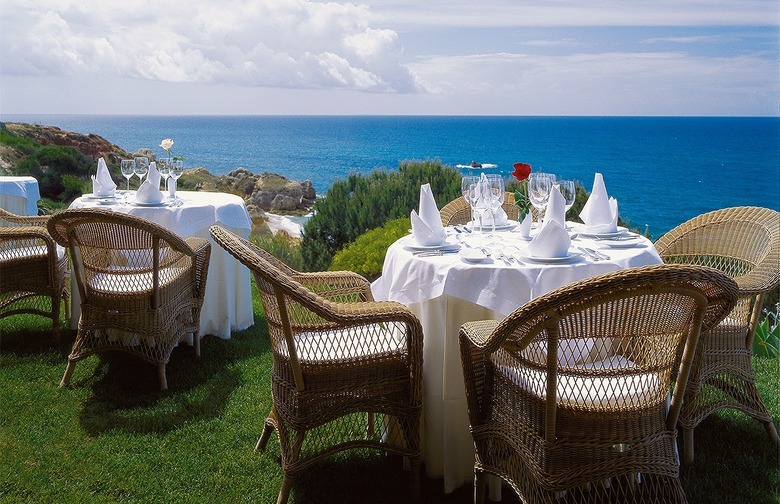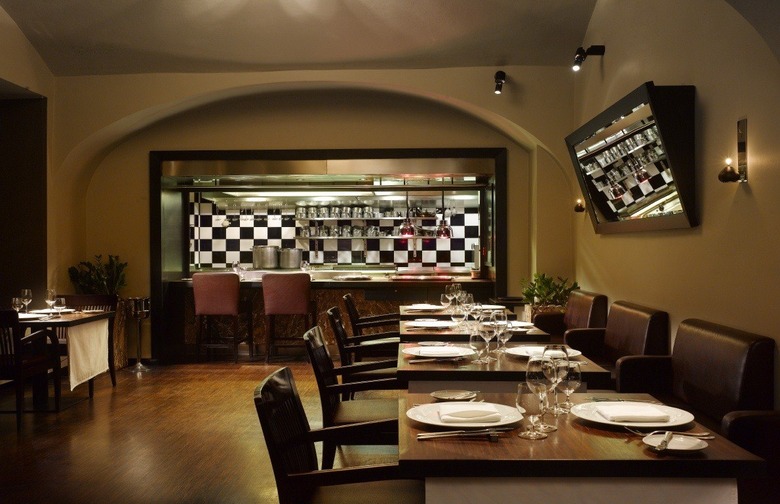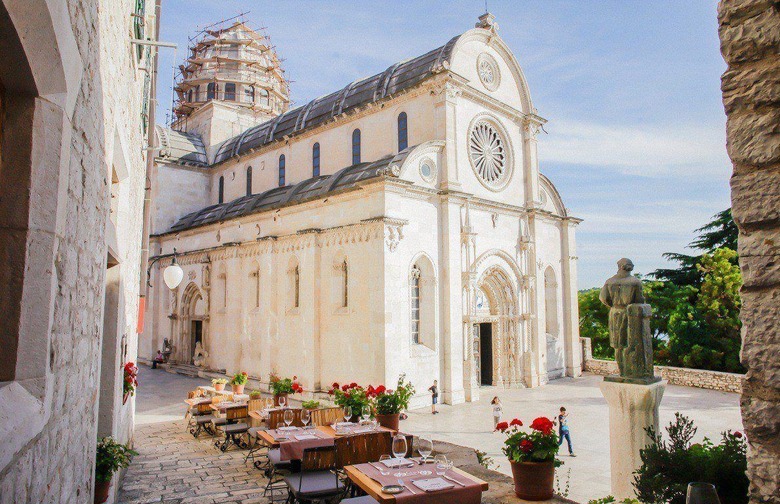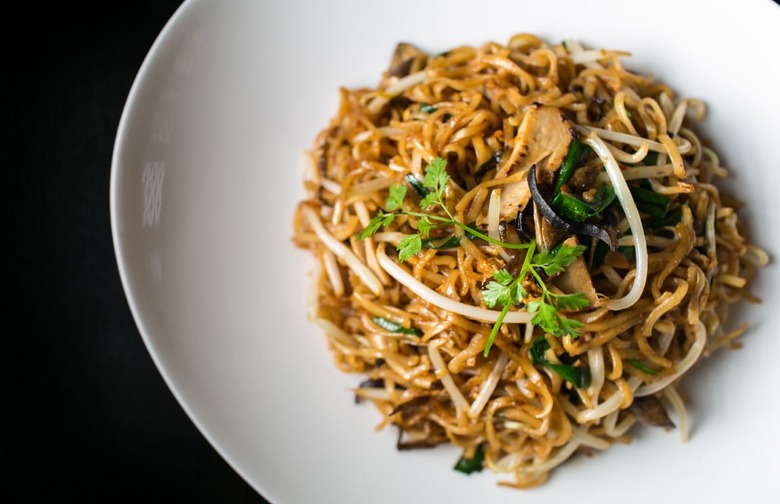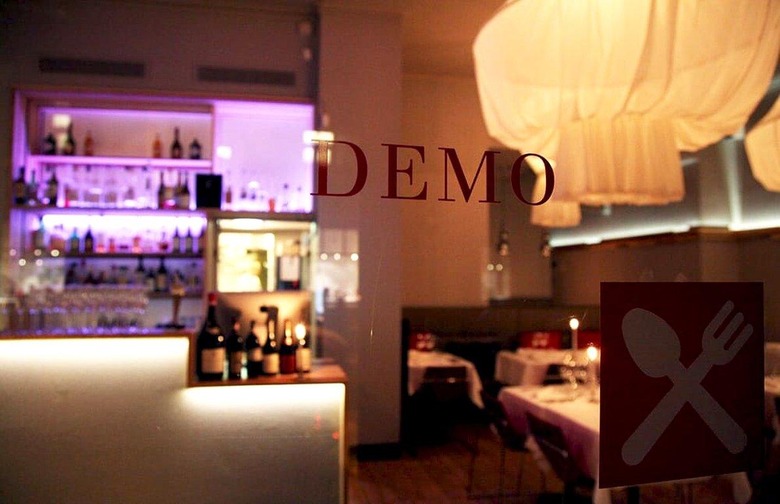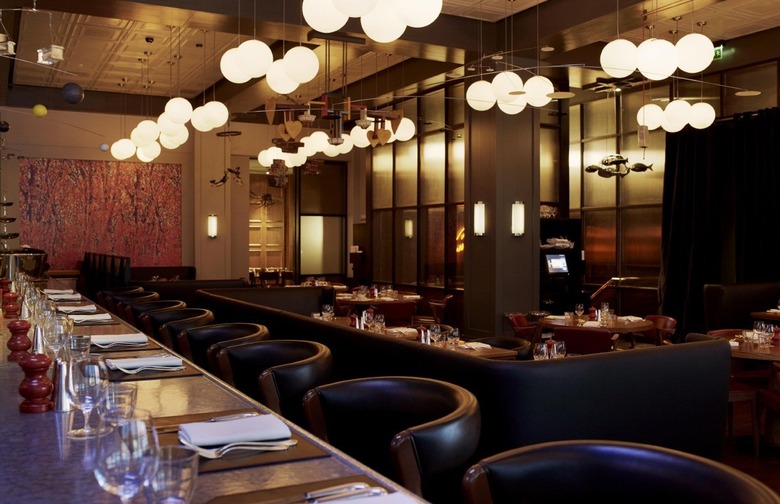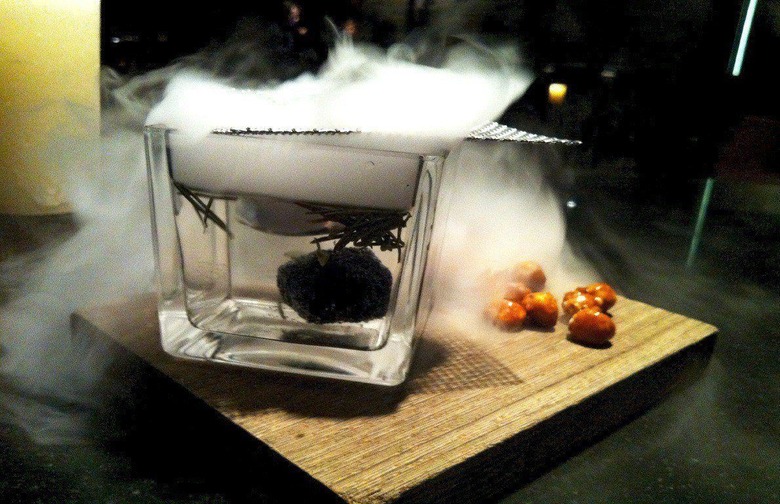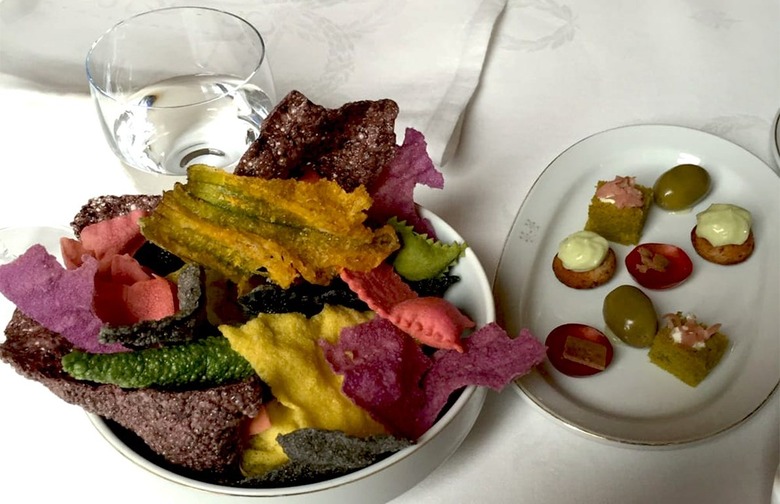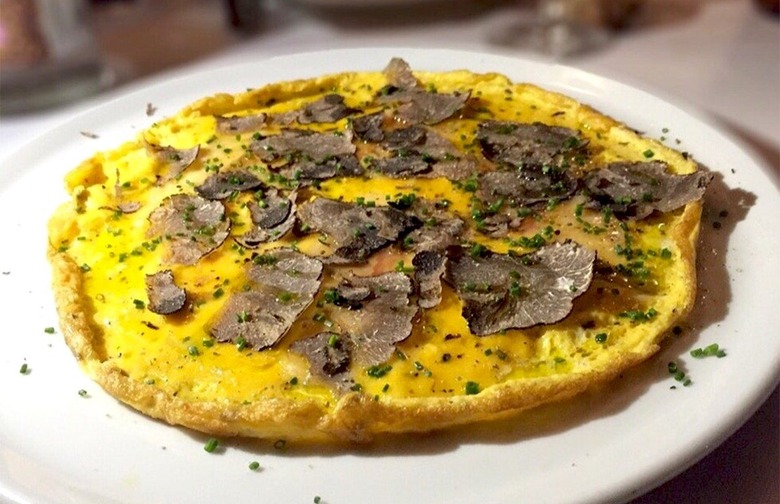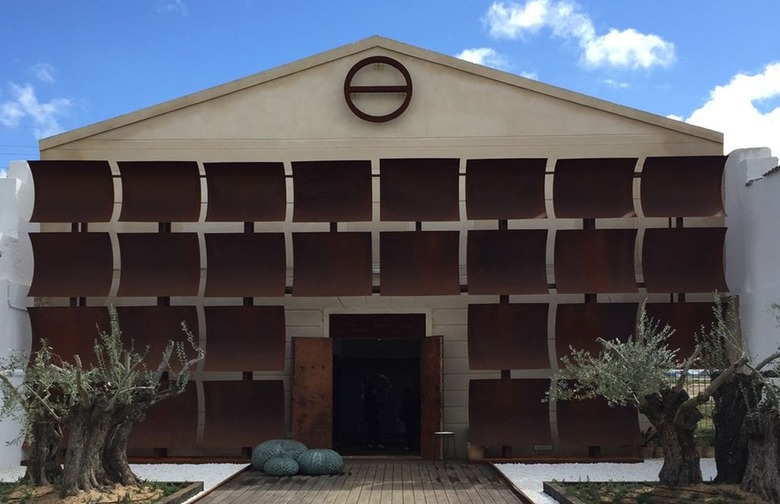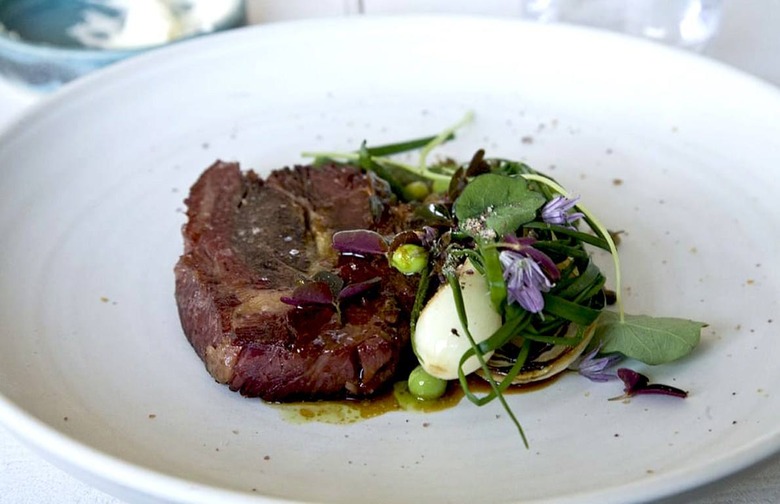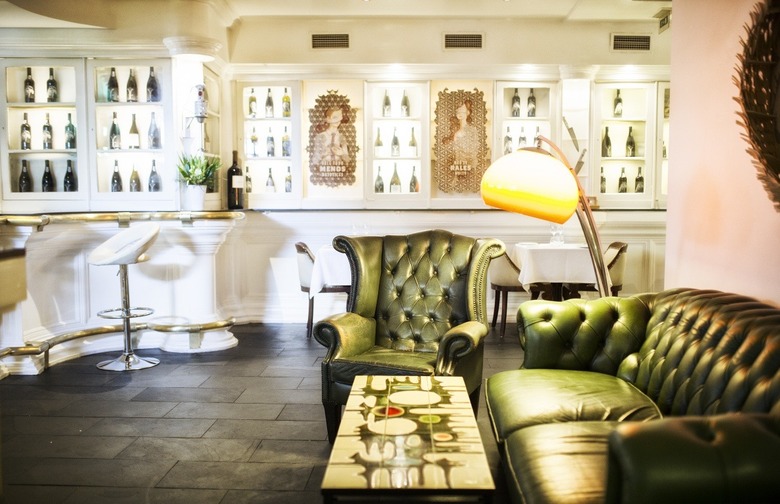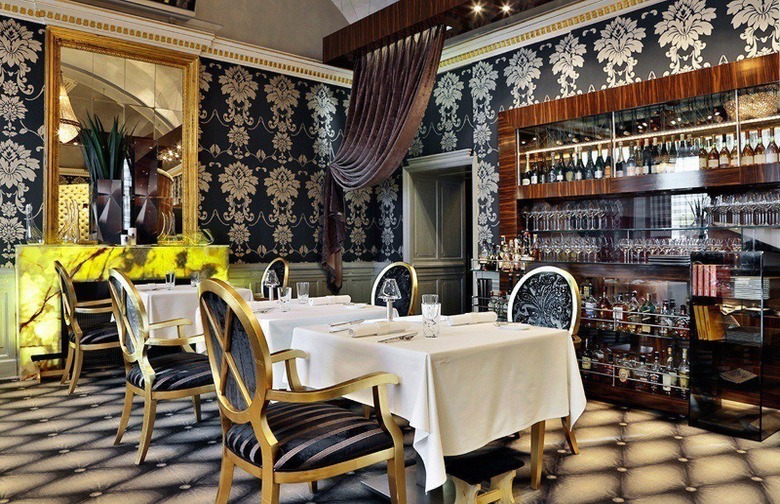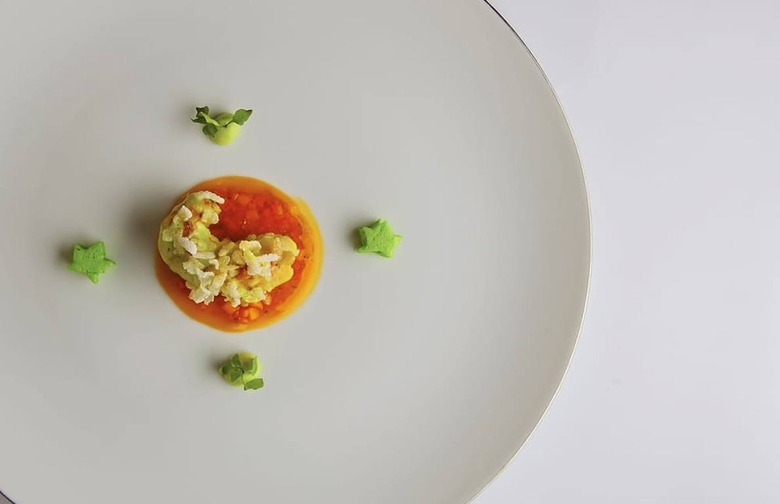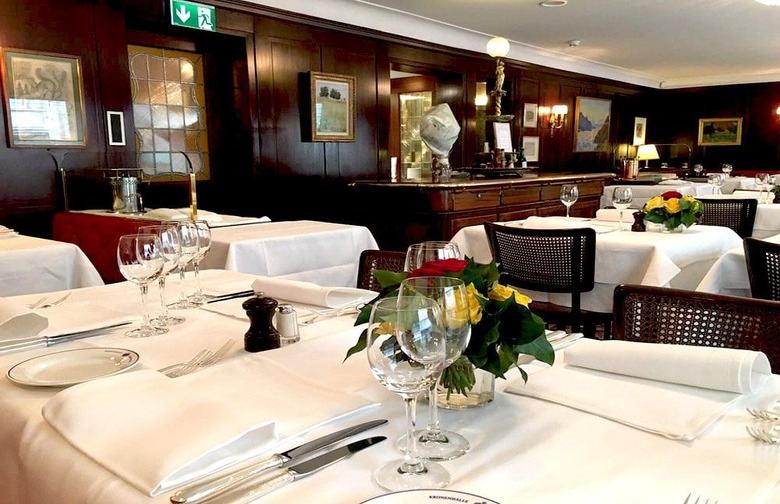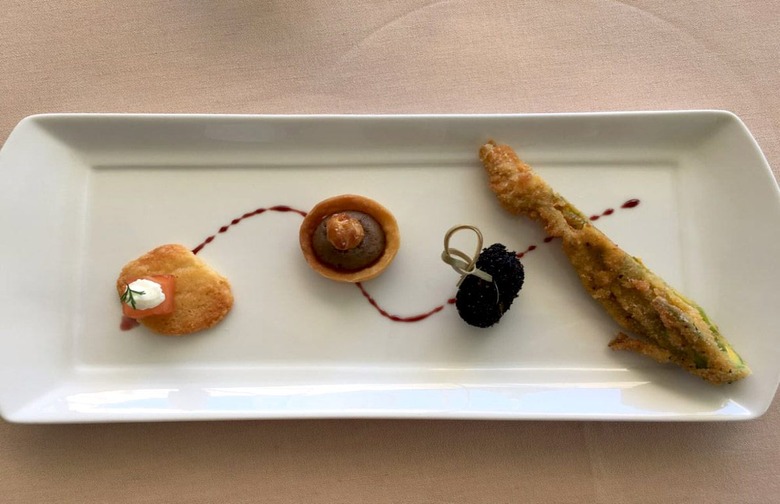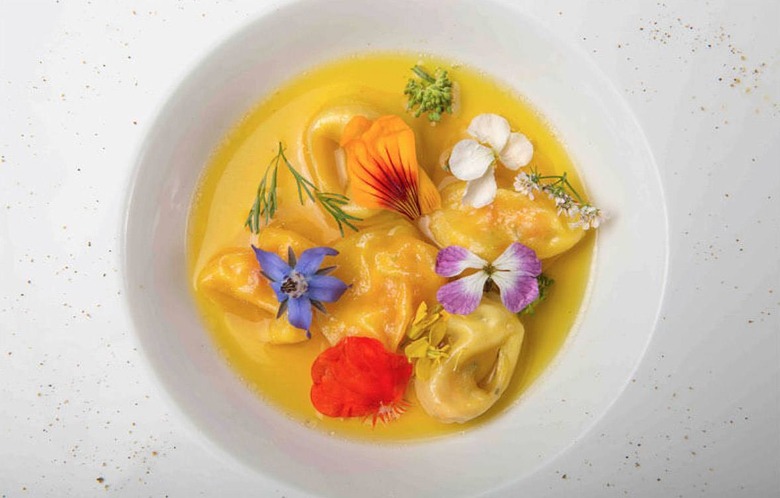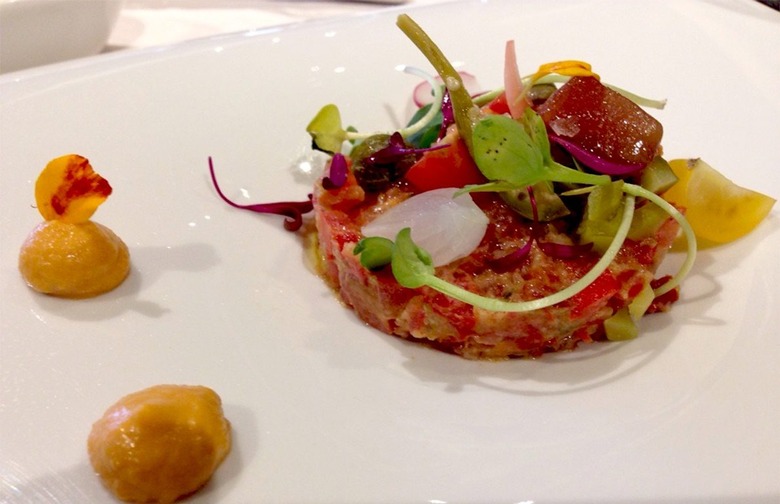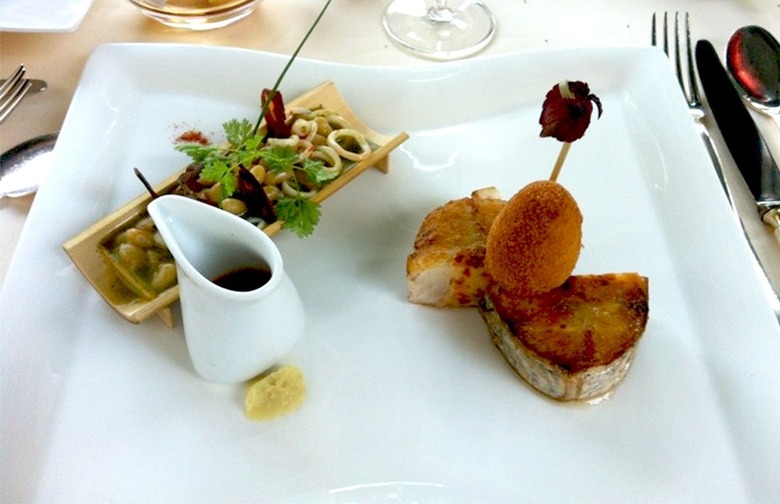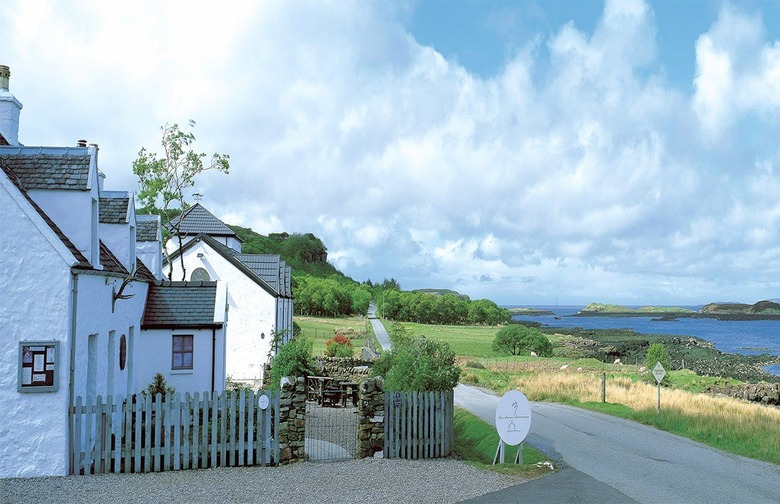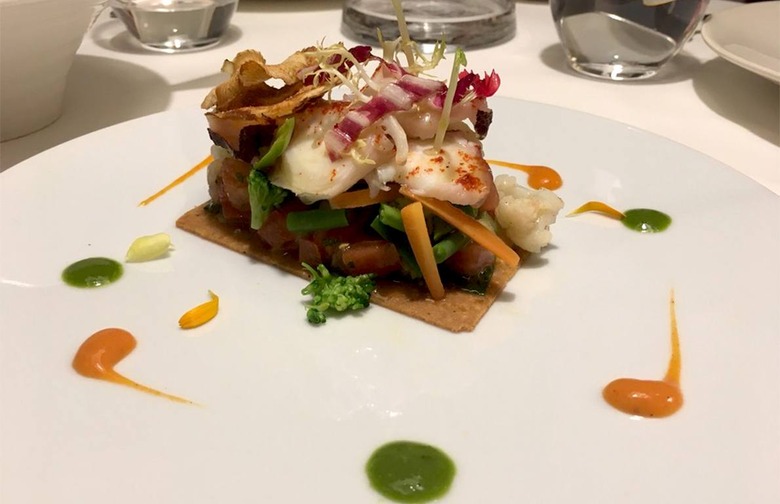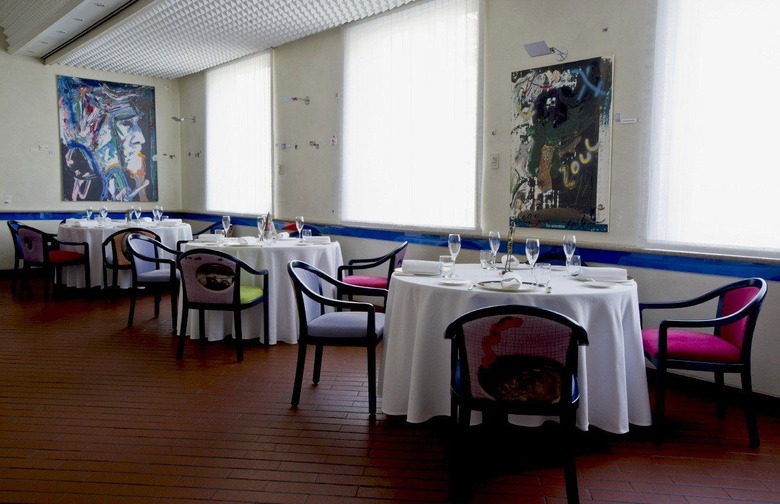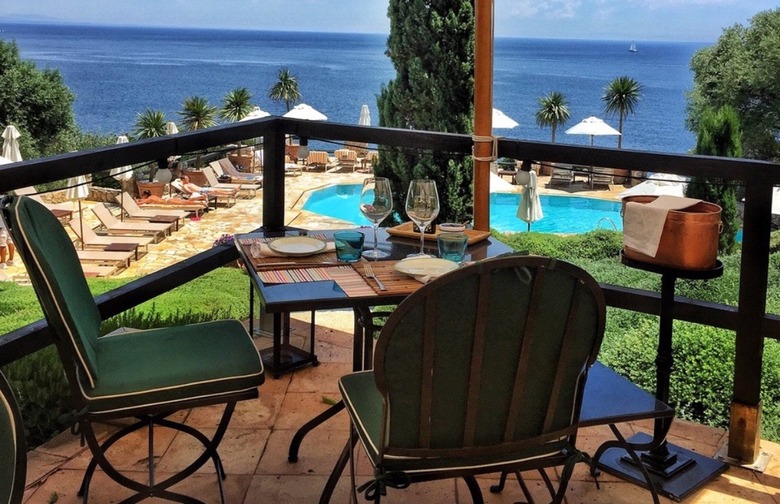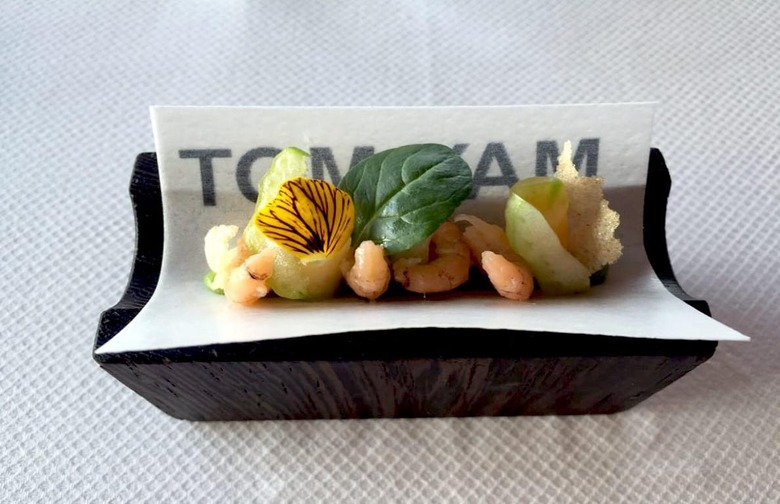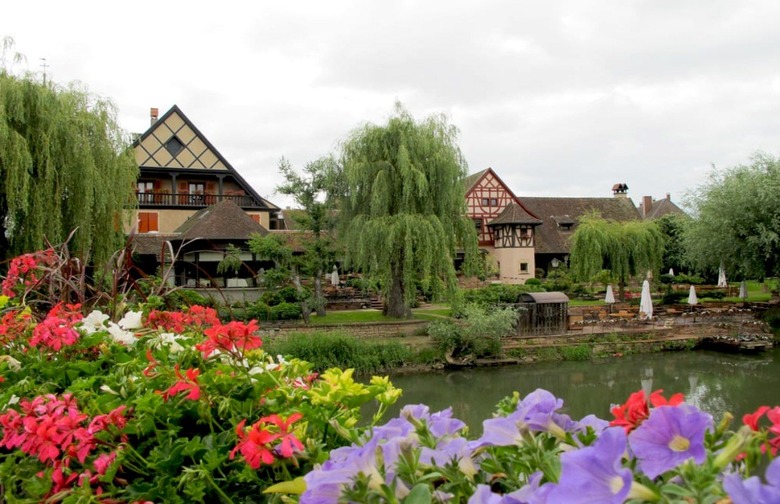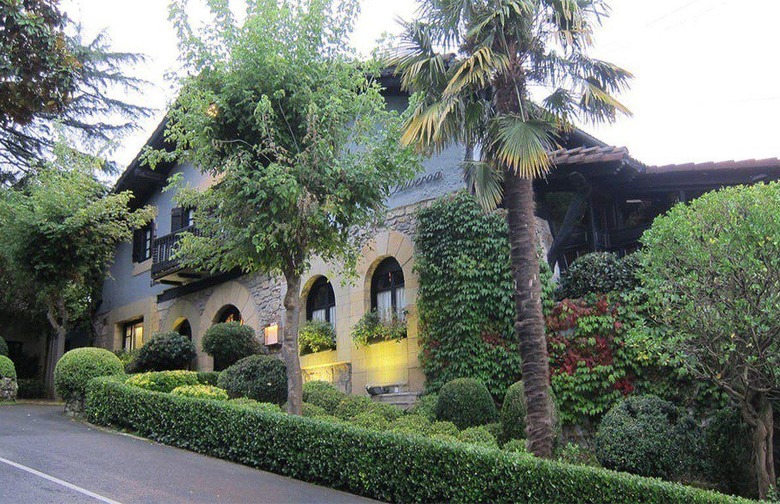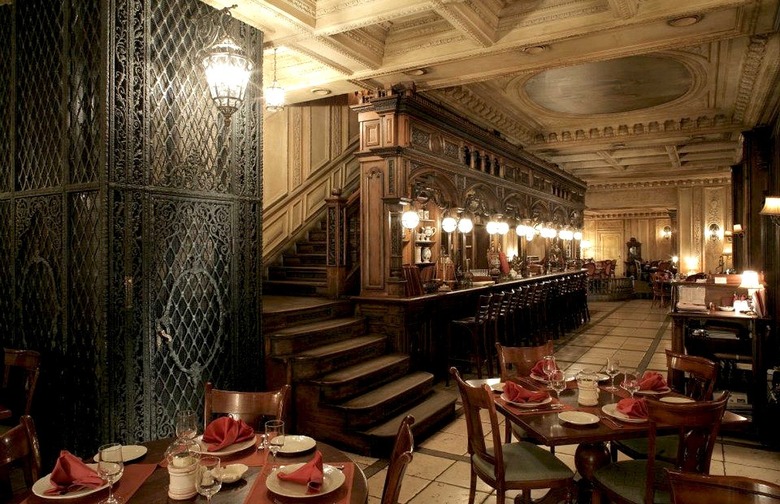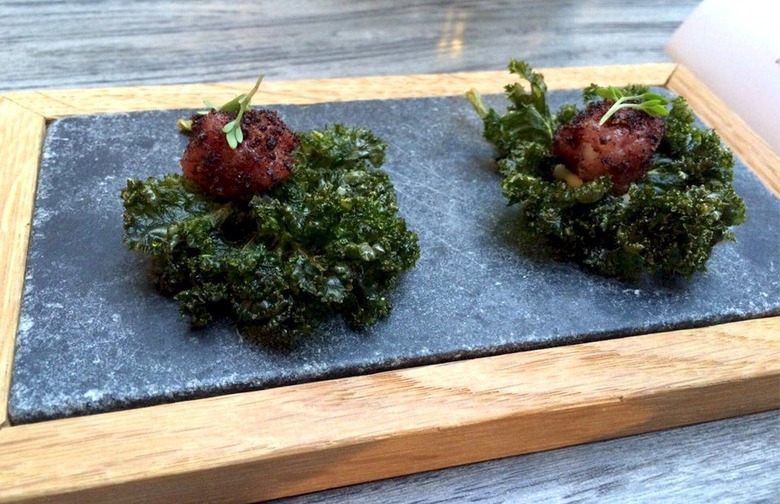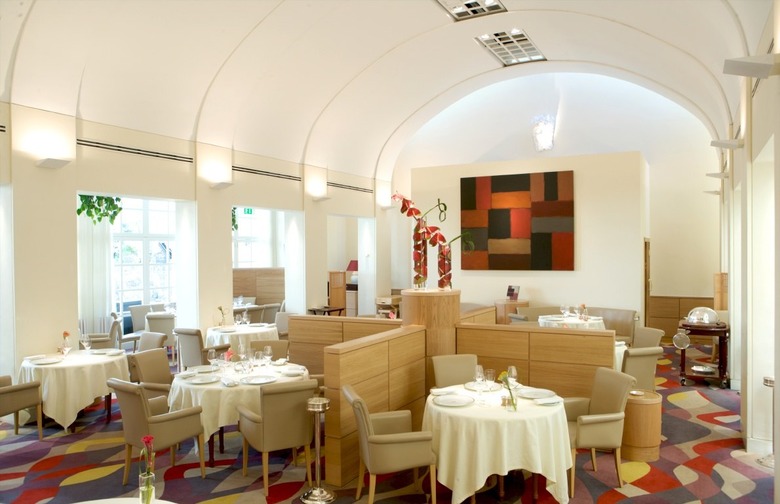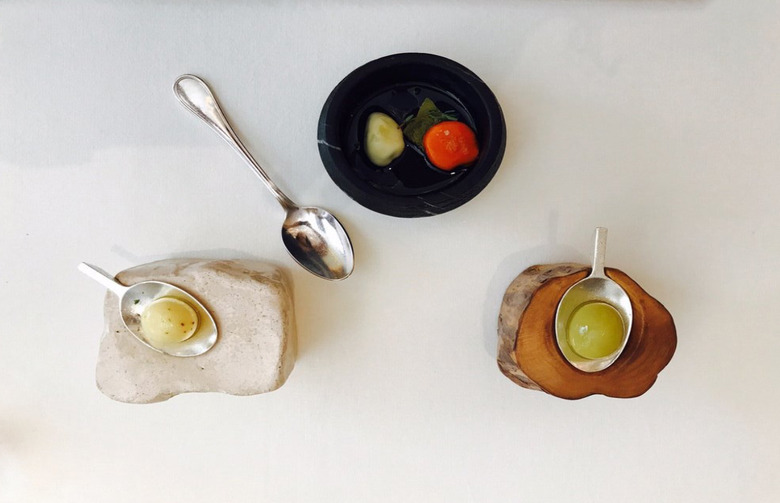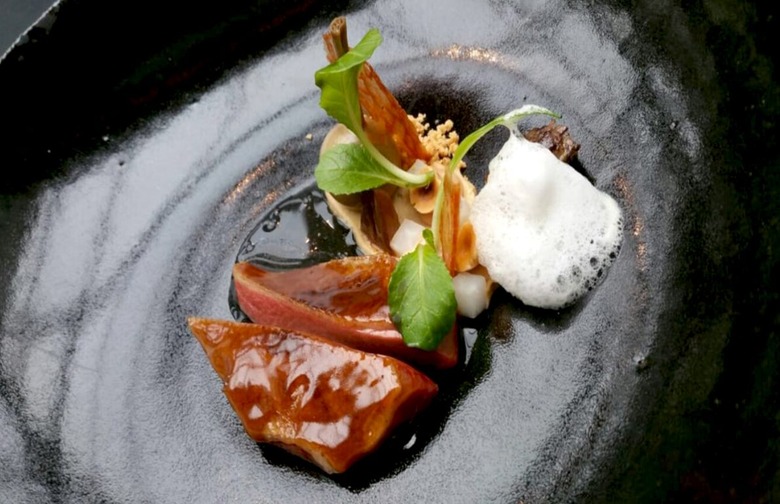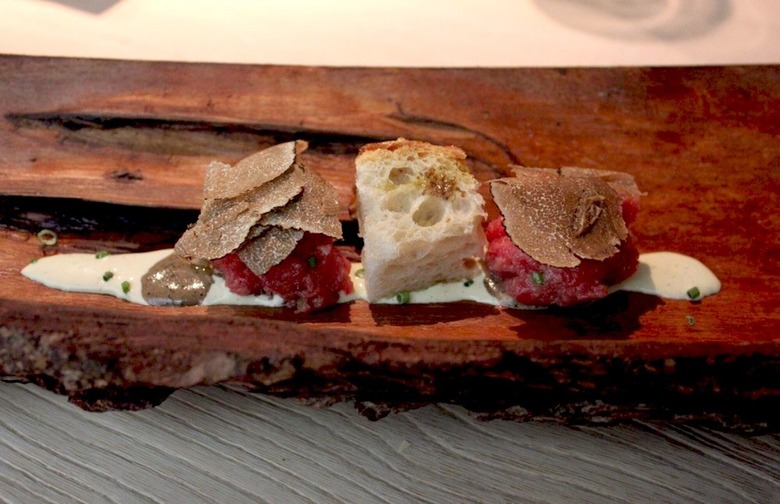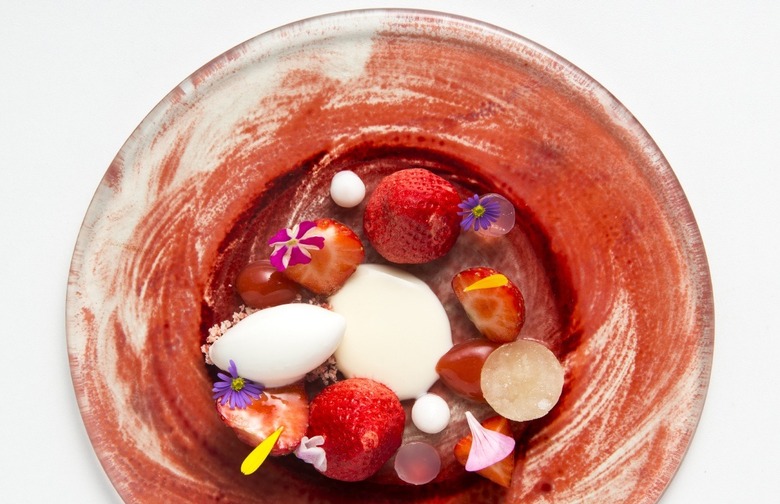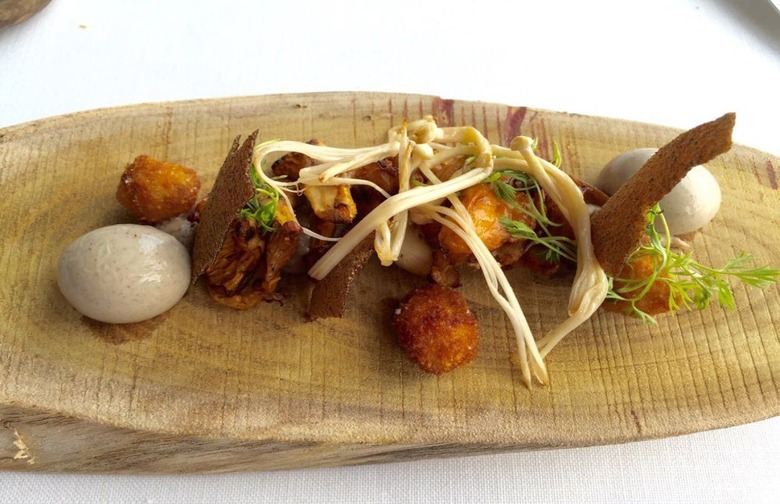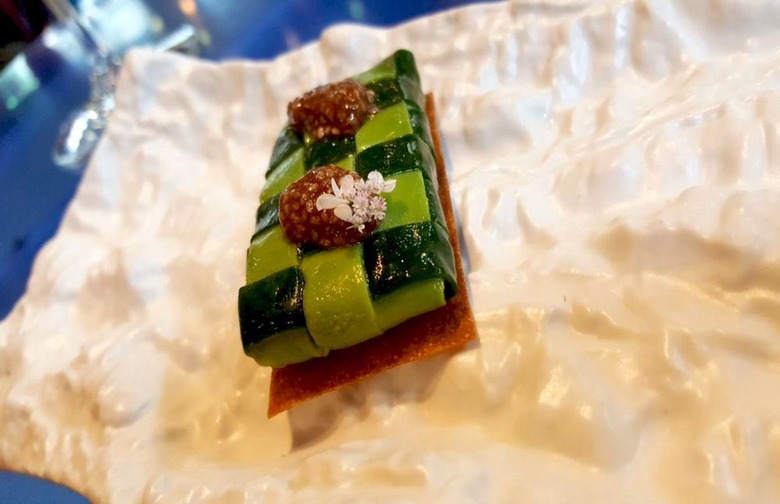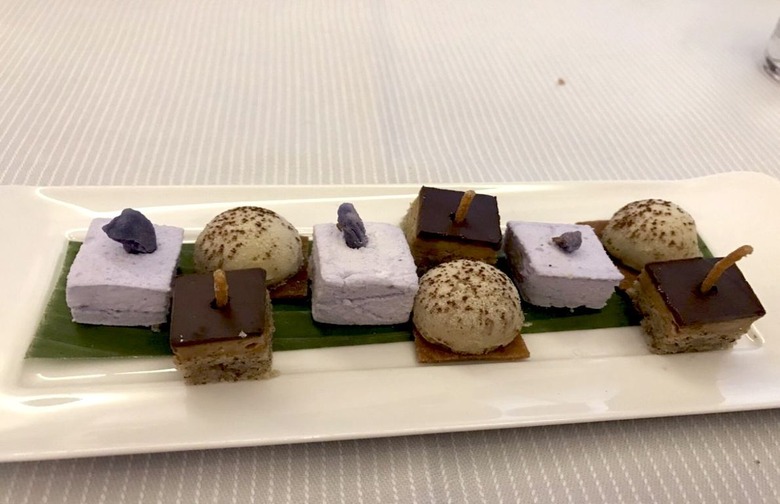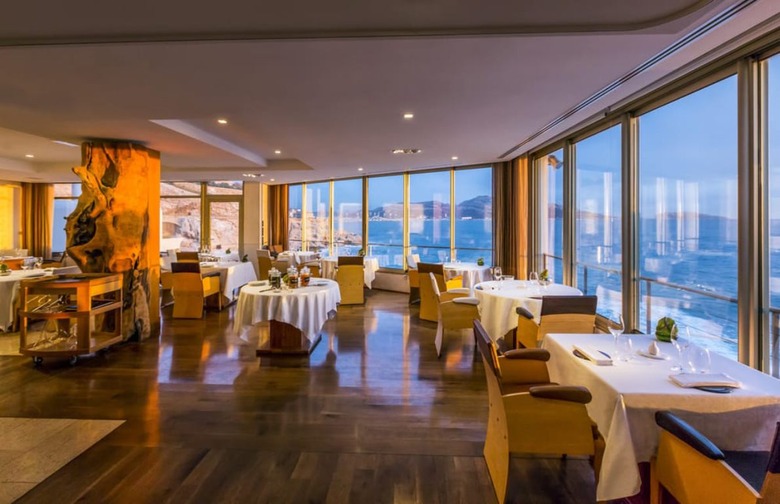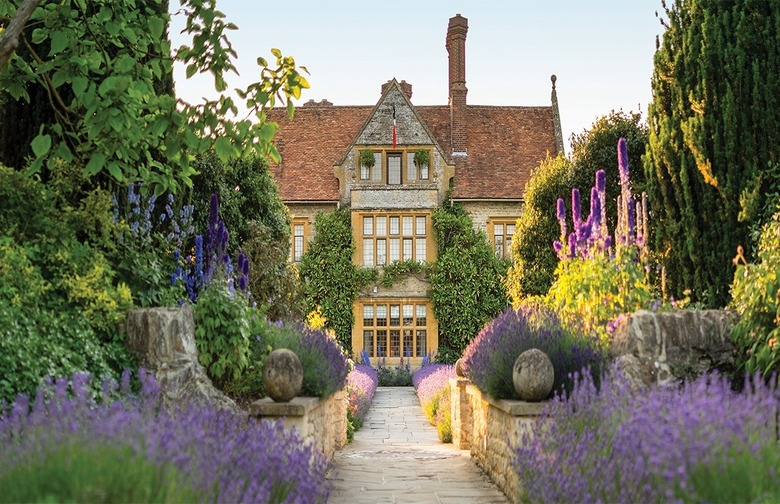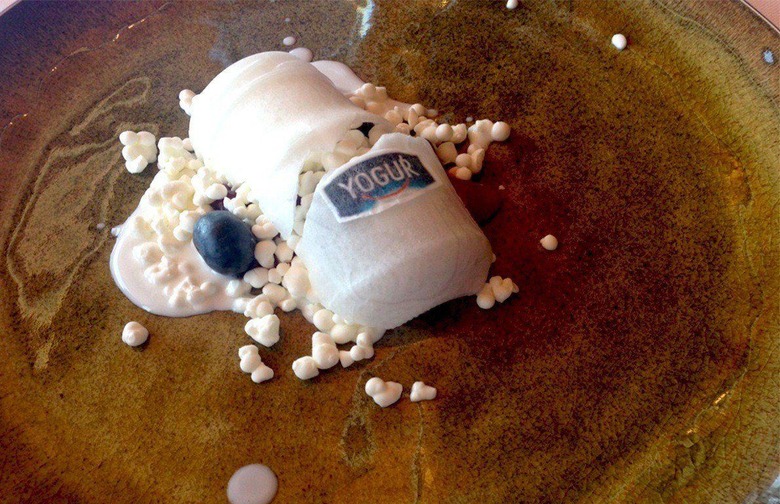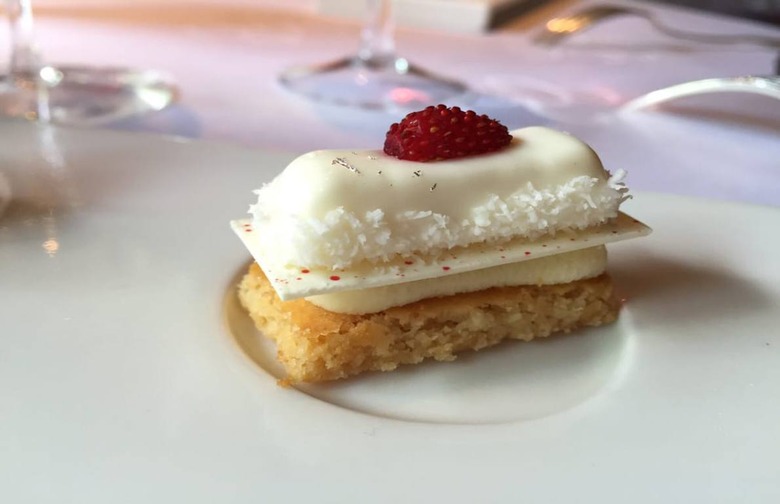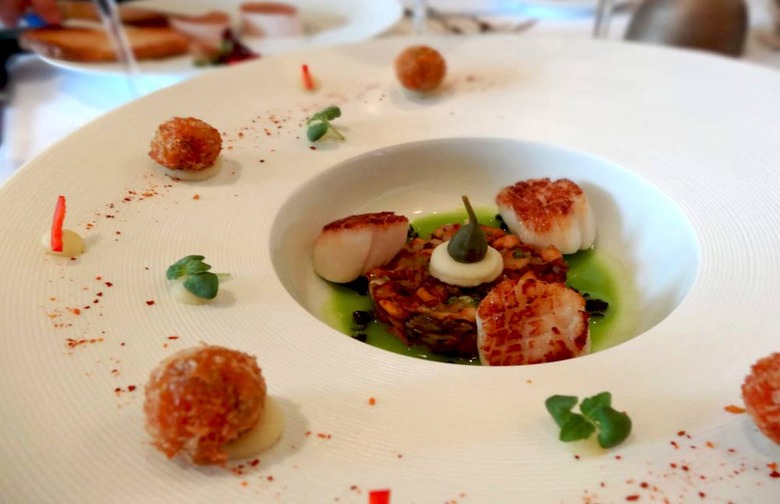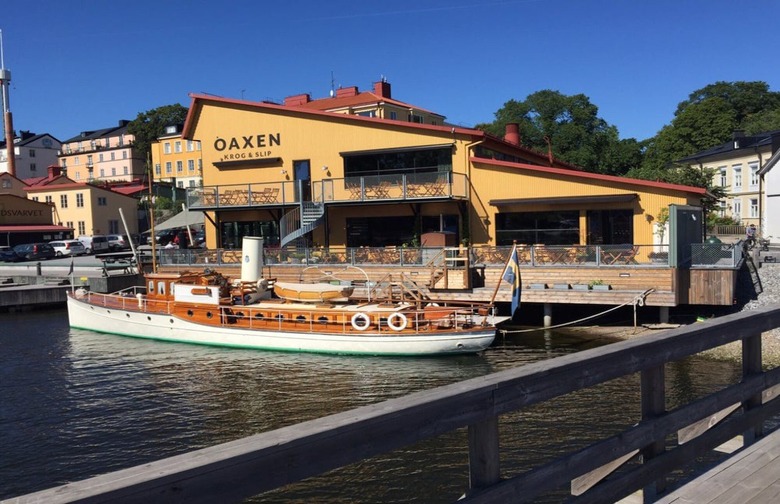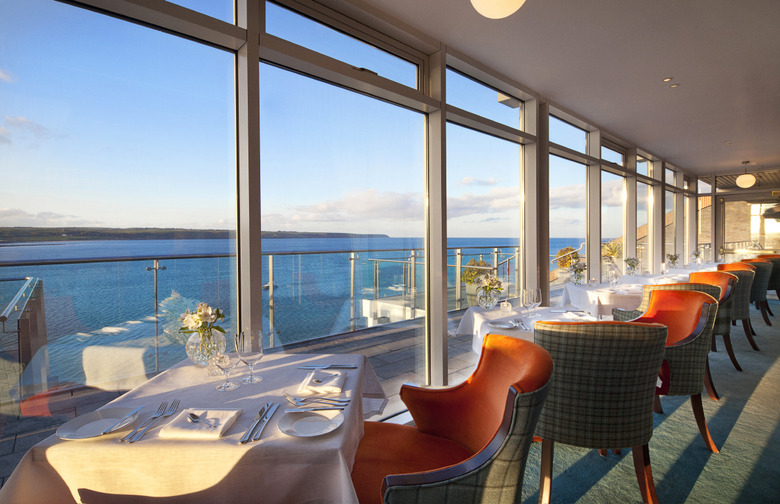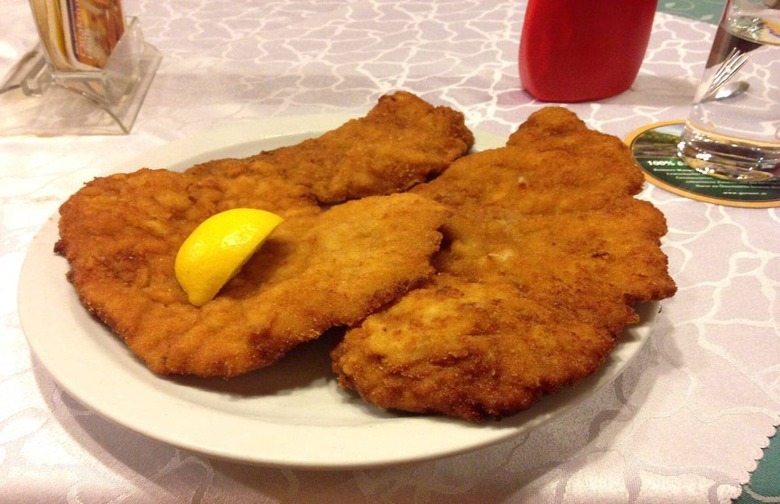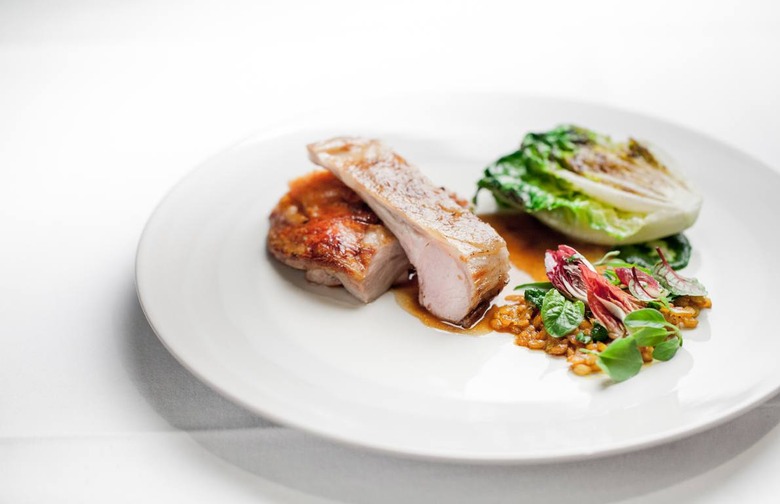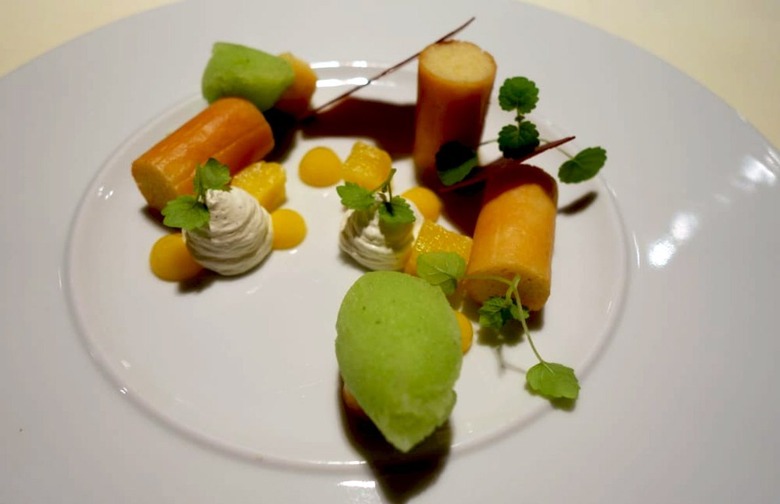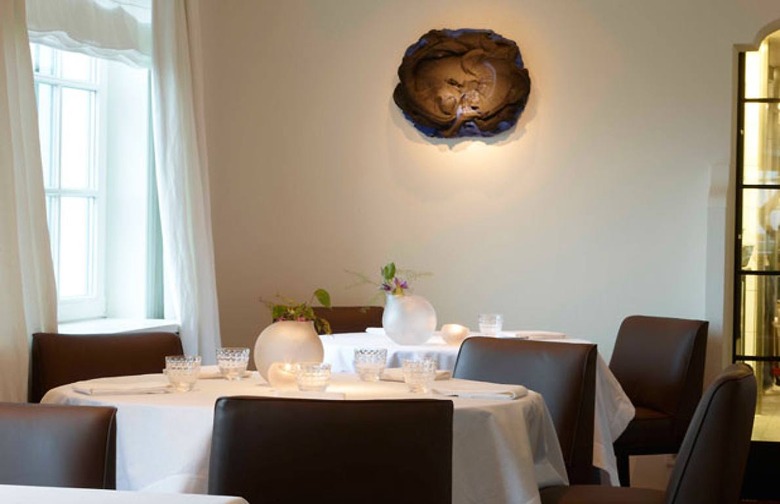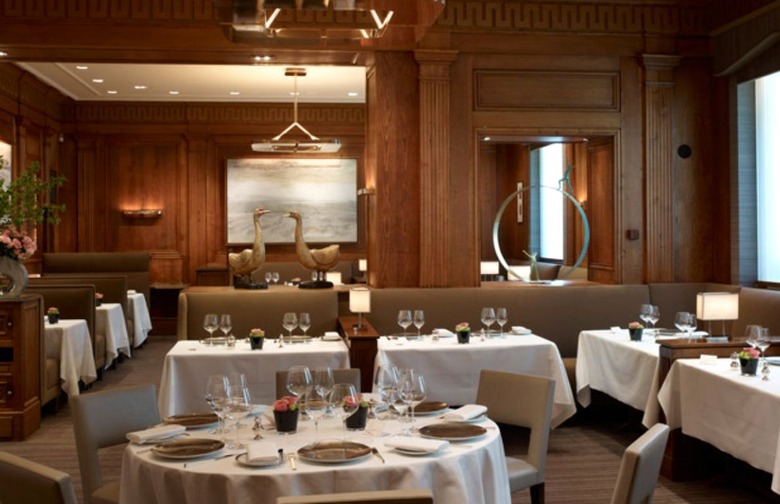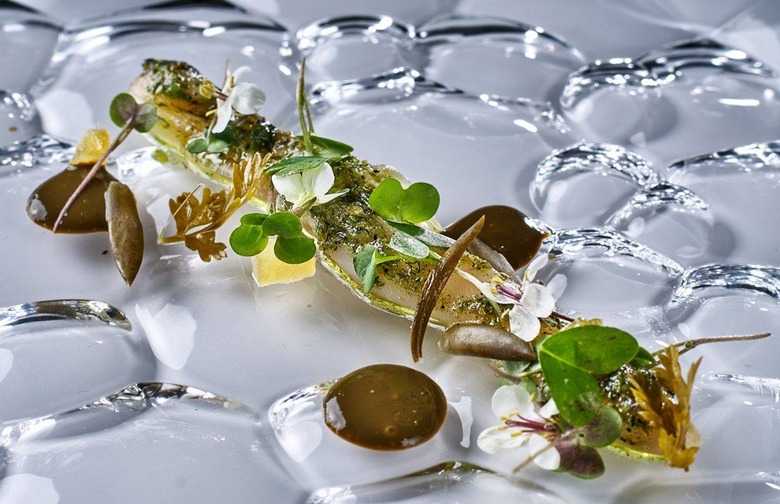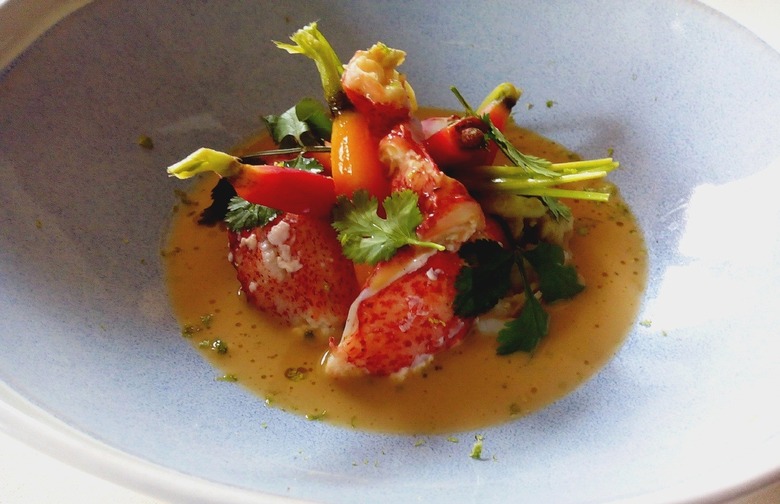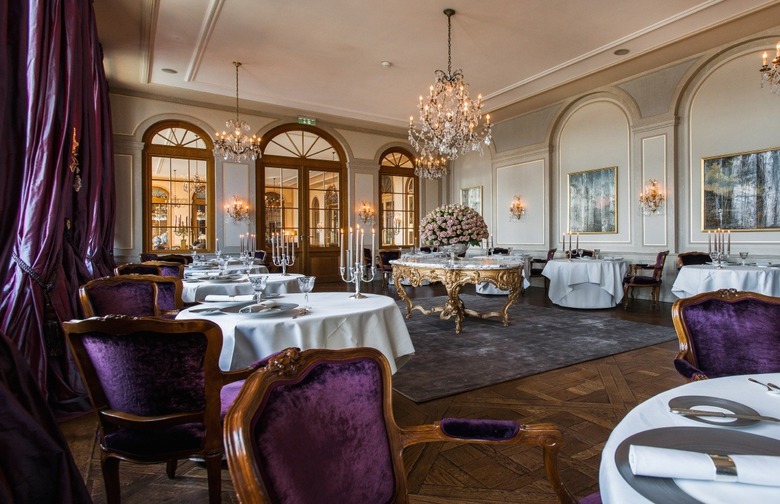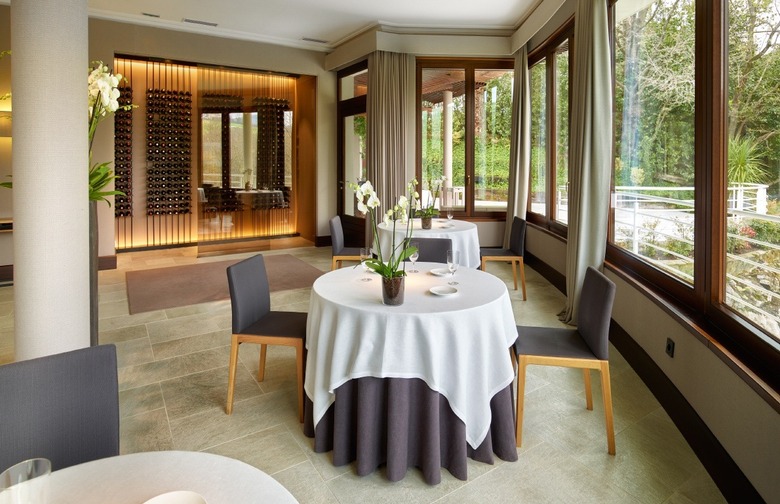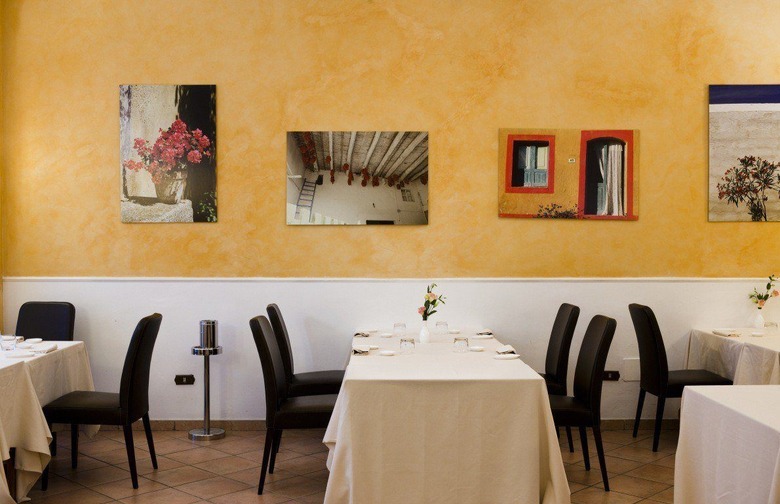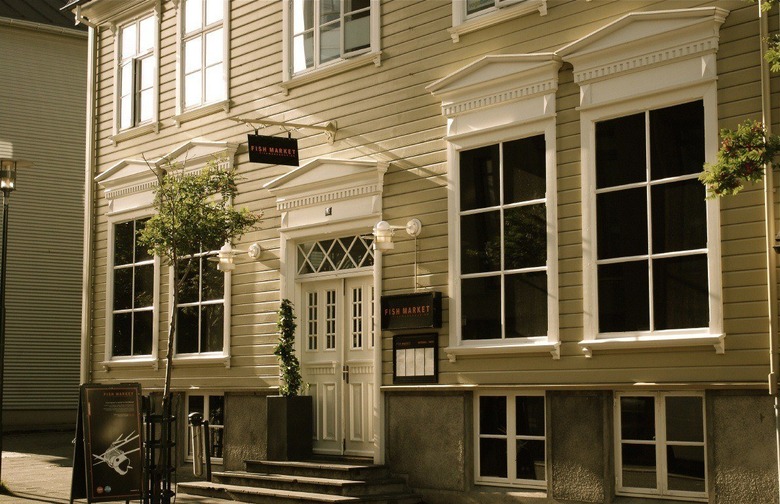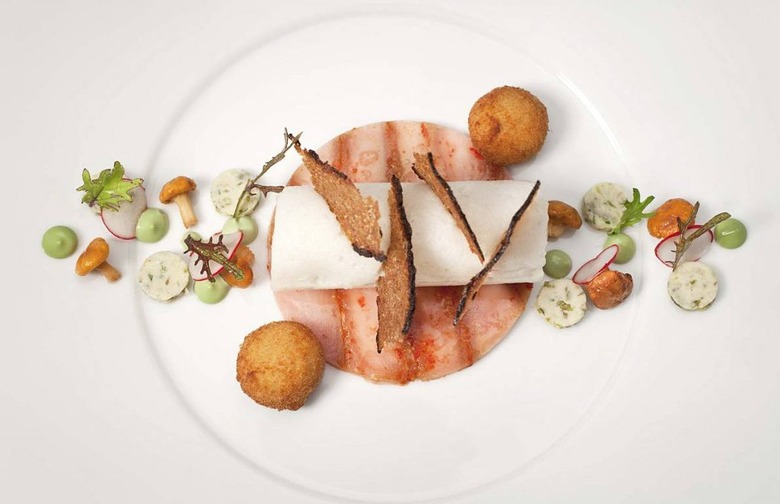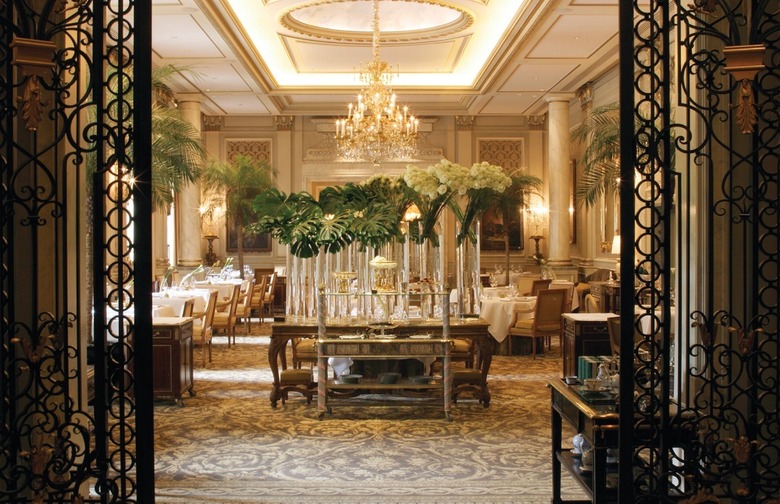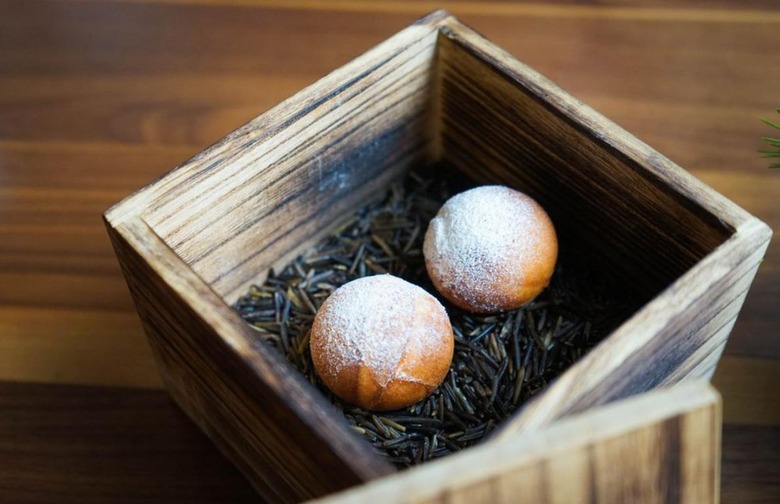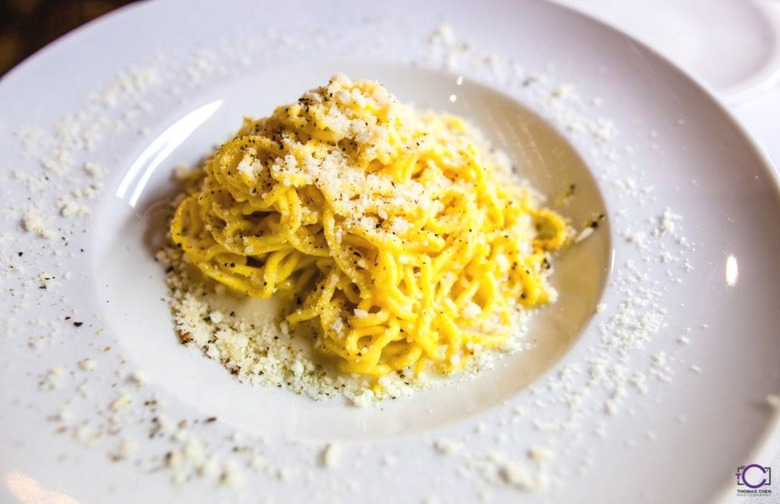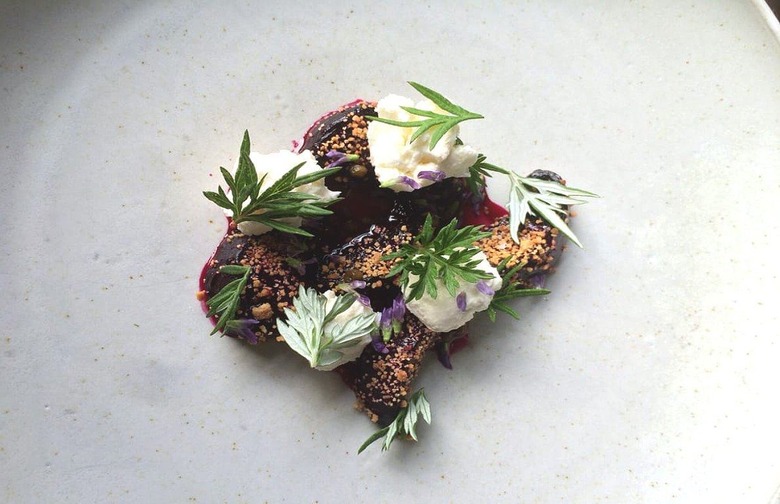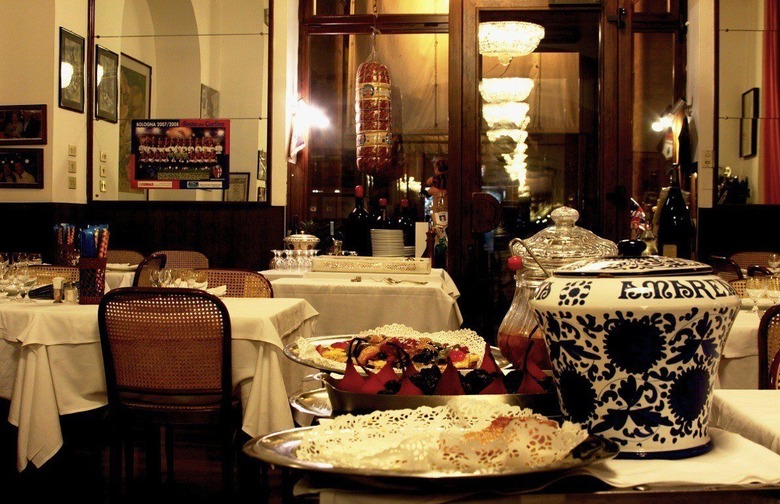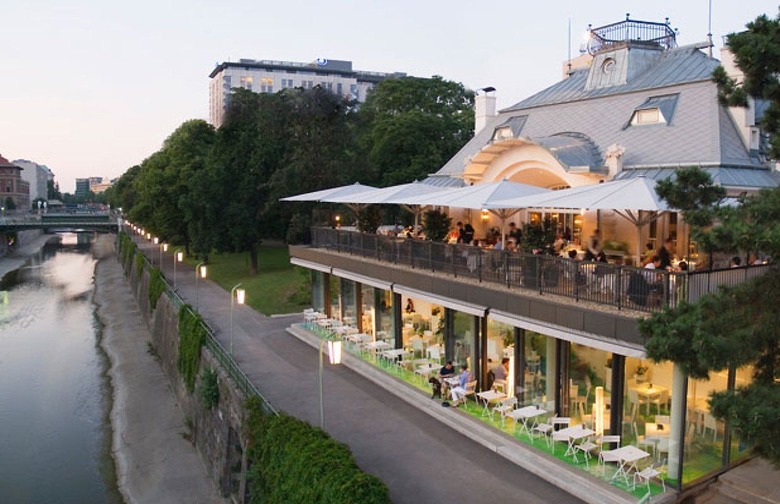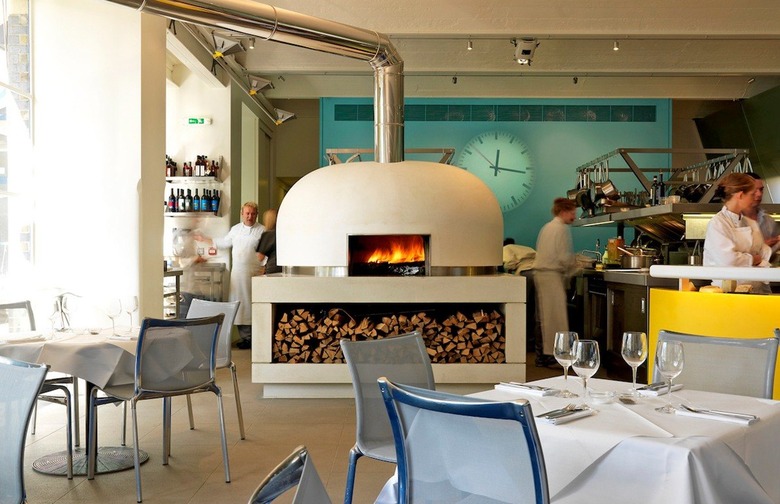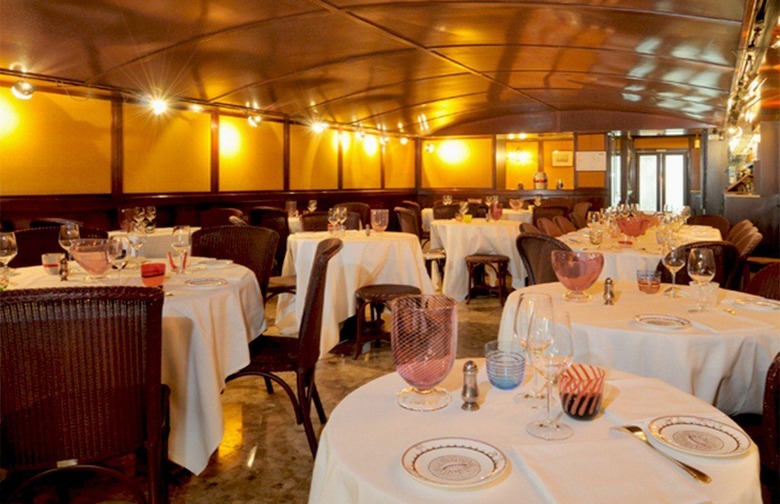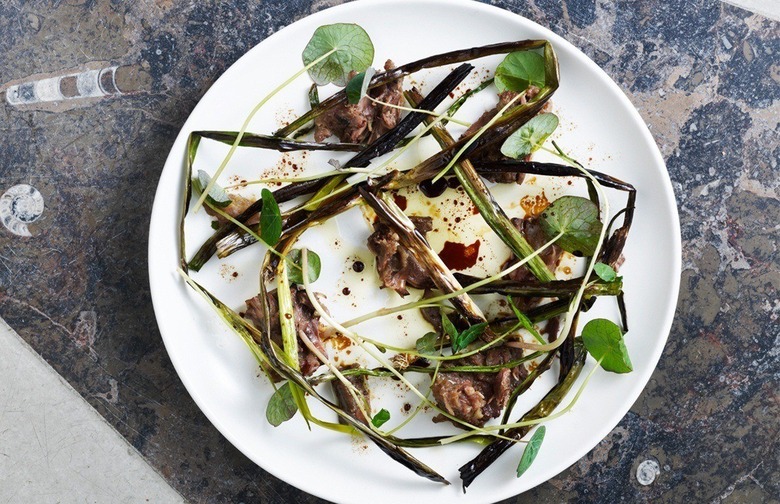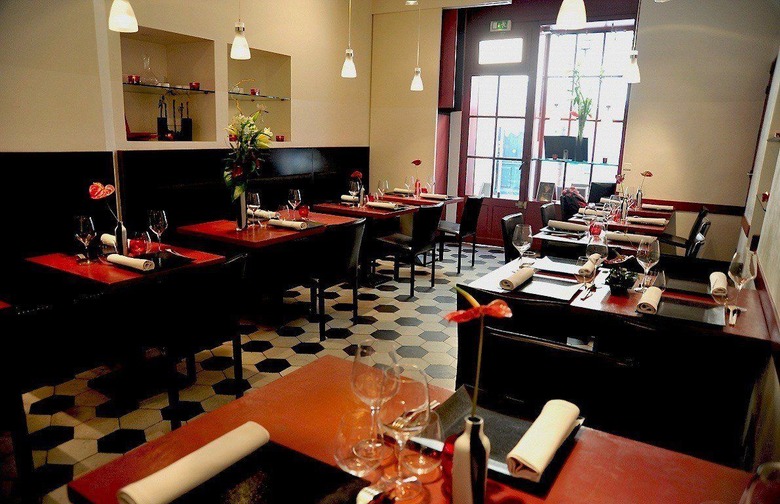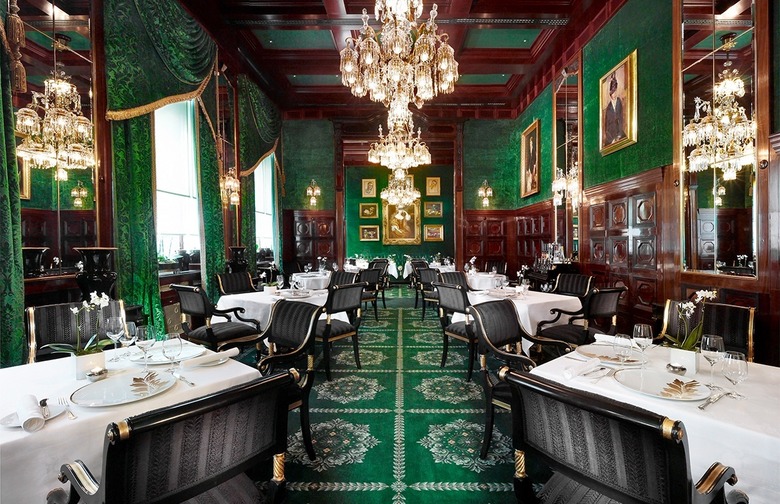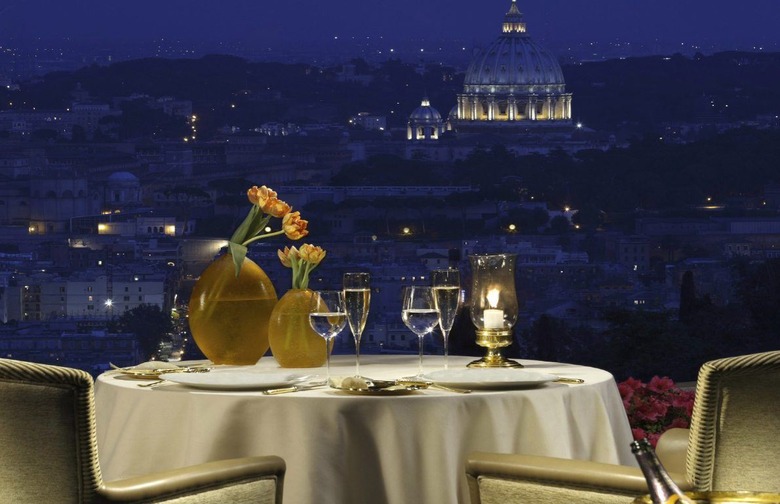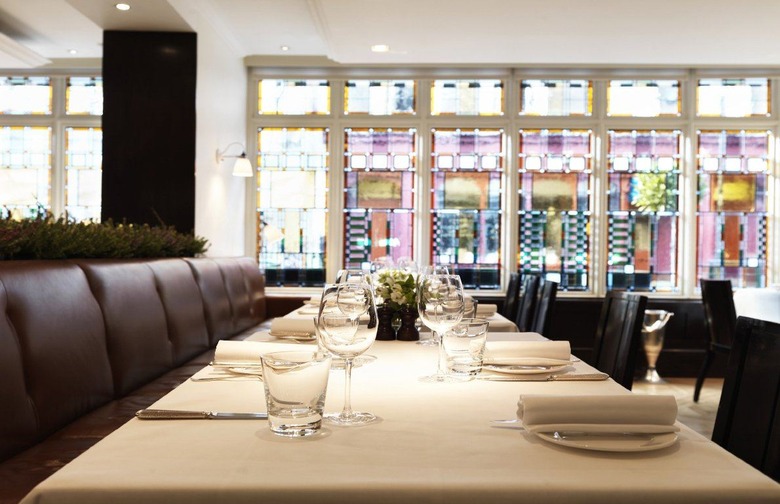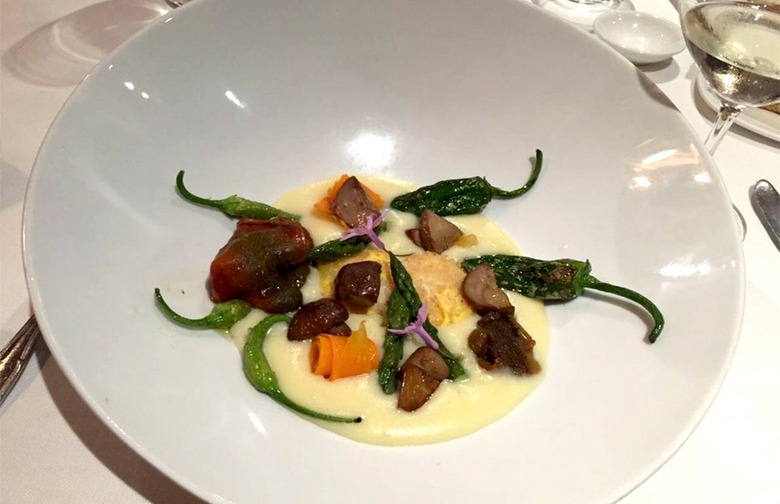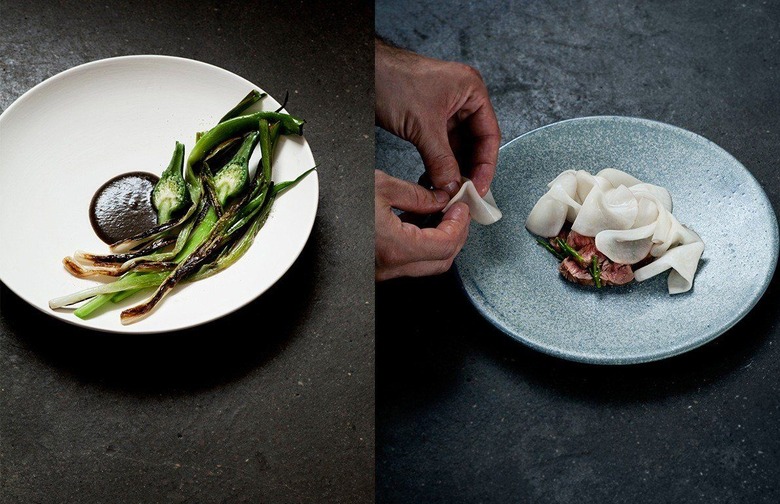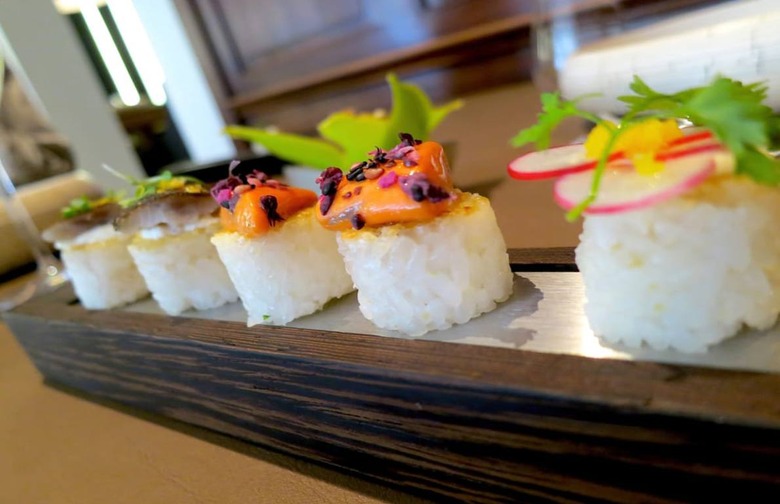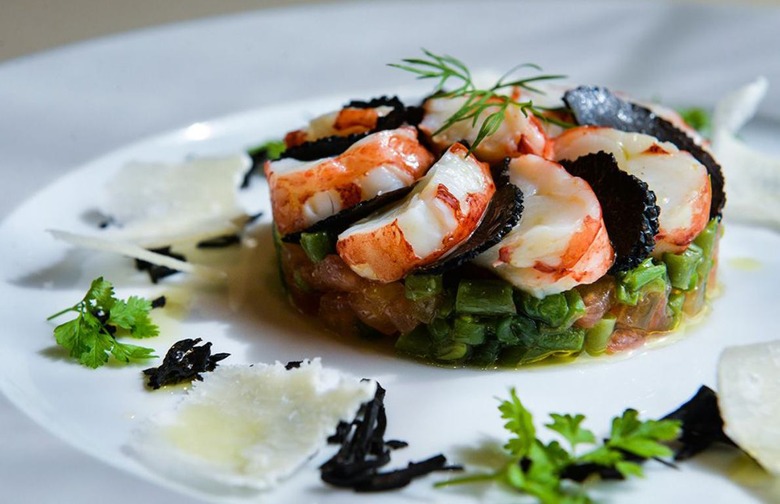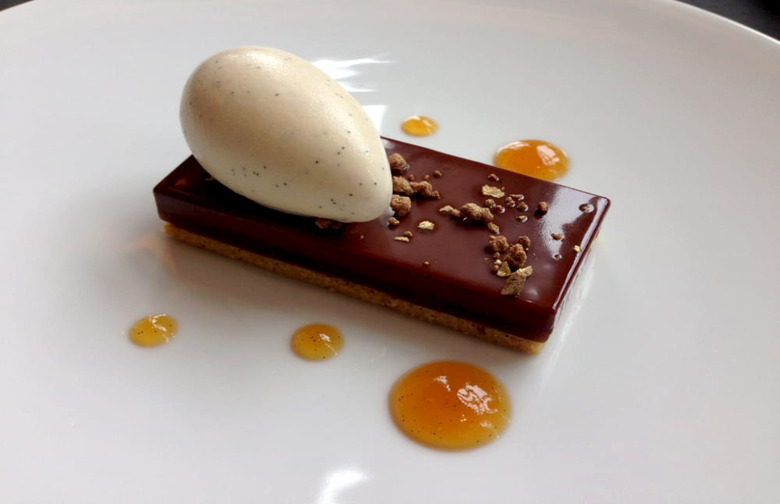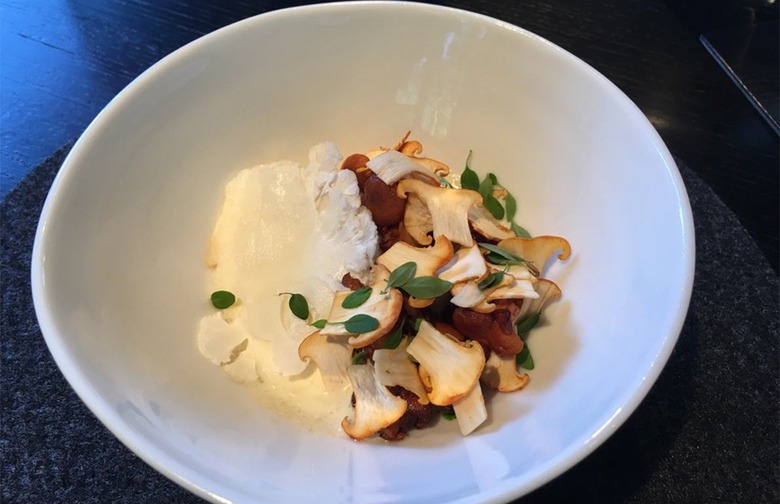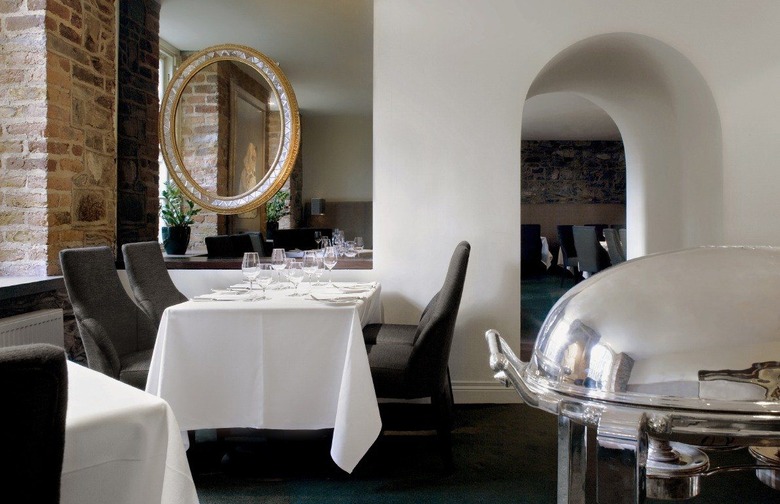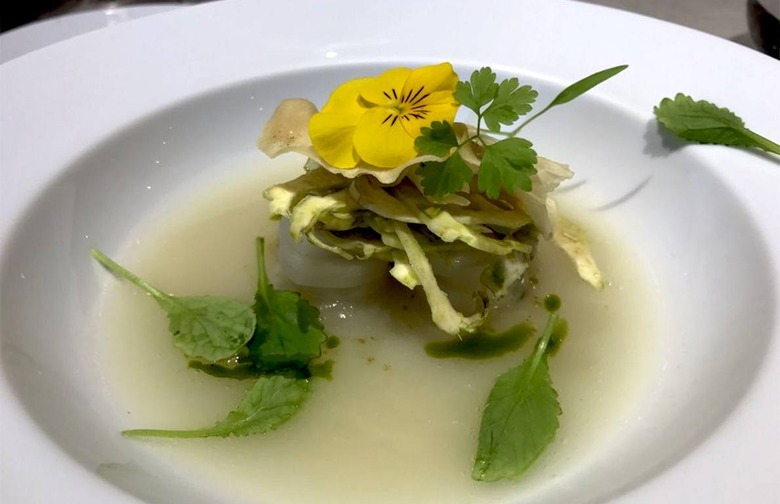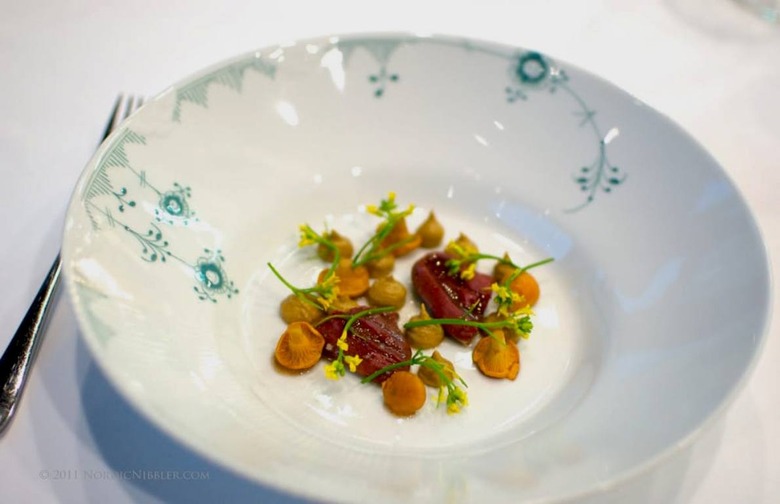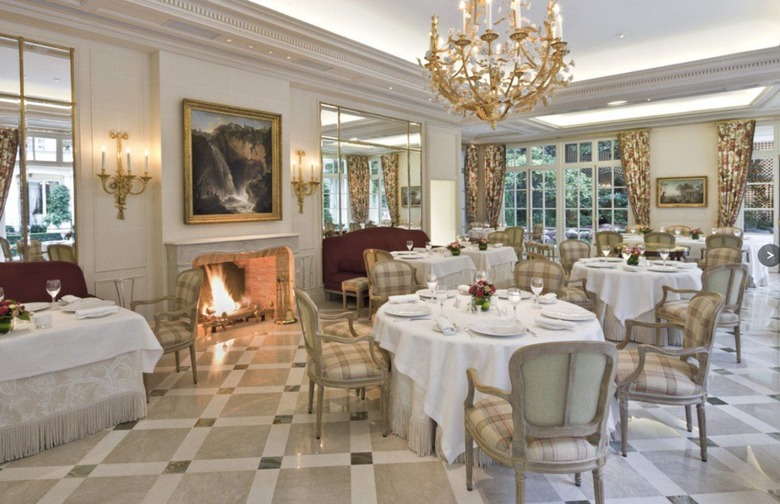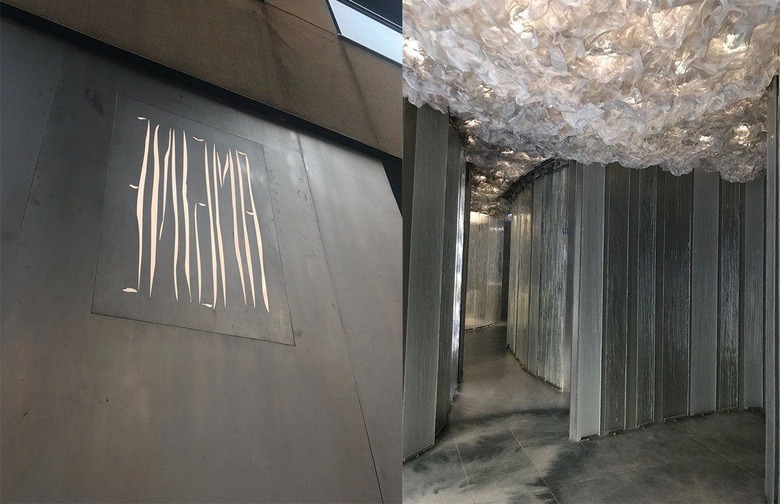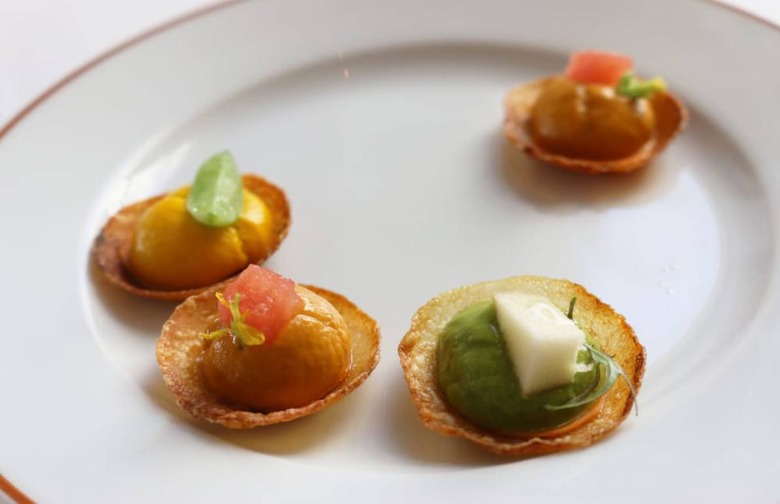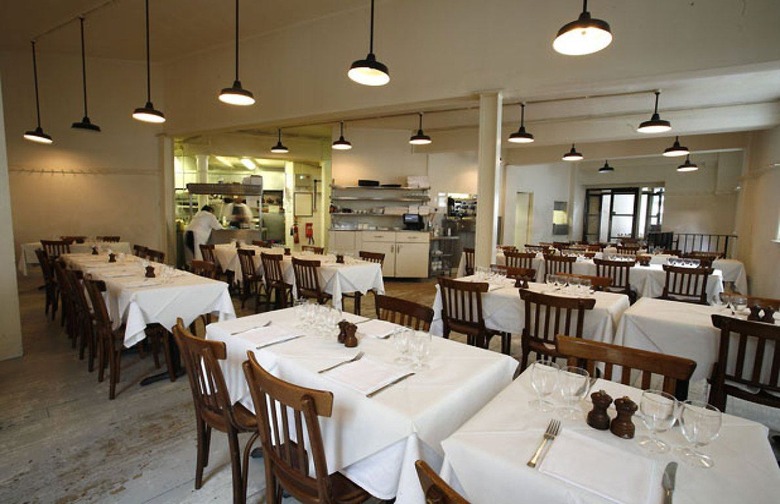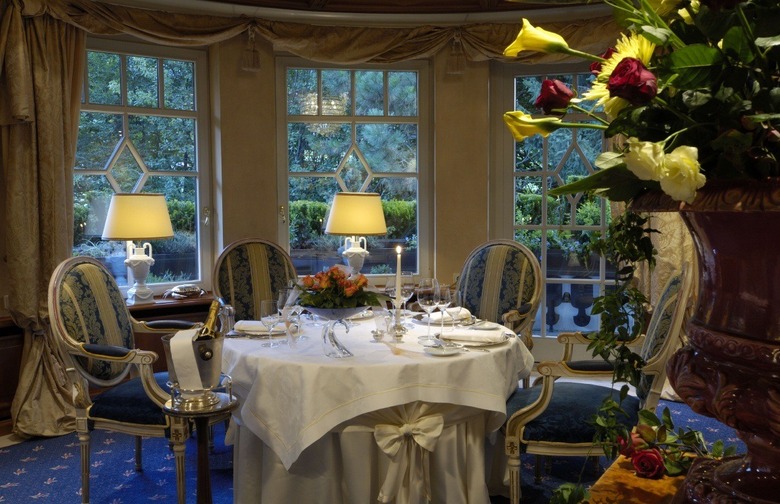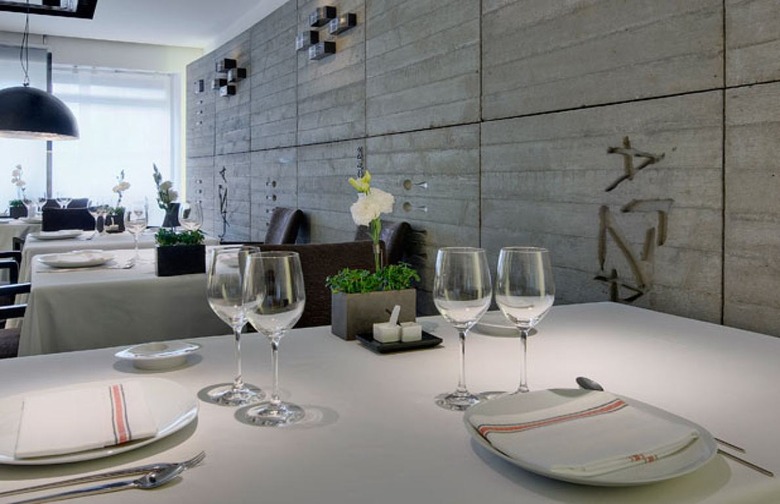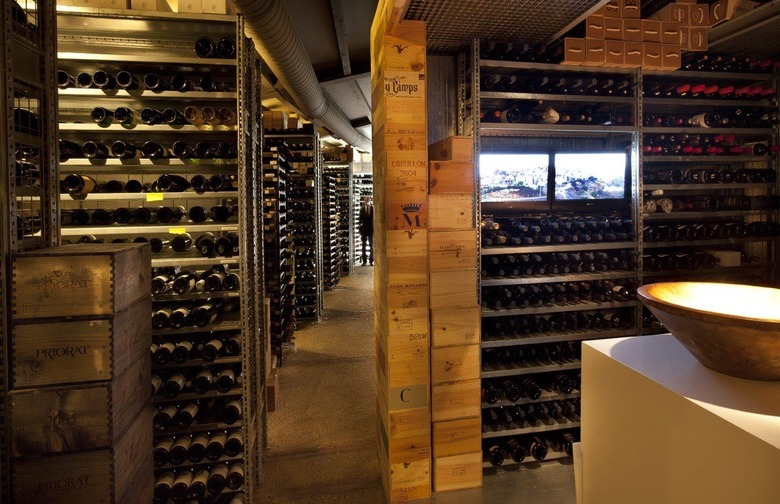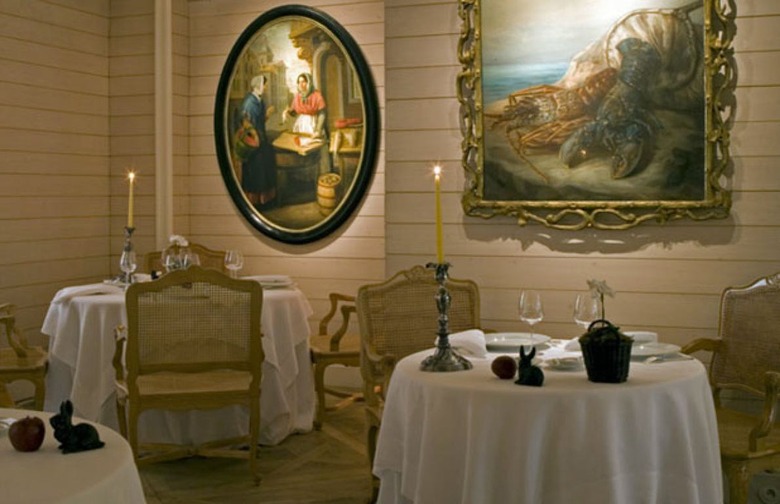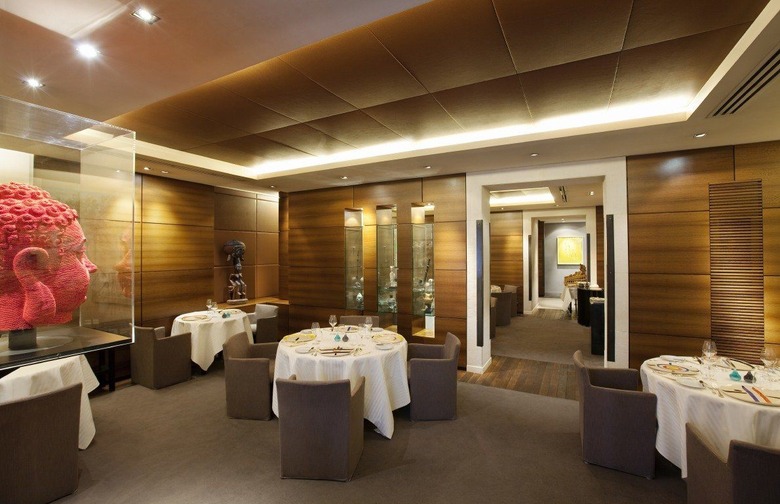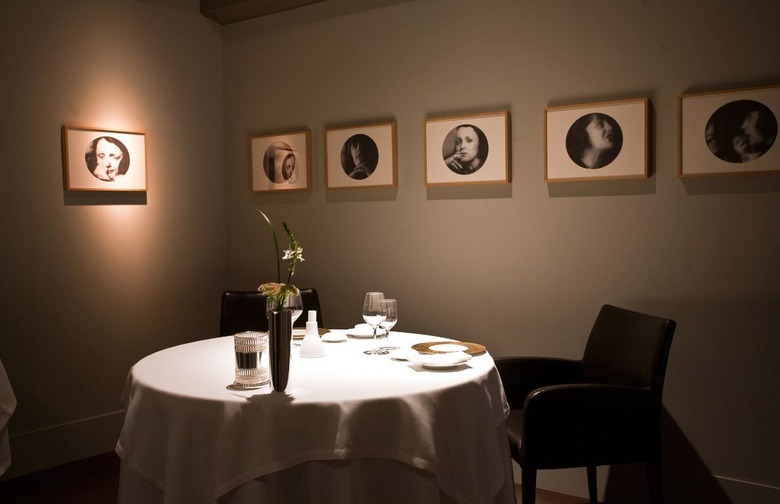101 Best Restaurants In Europe For 2017 Slideshow
The summer season is the peak time for travelers to flock to Europe. The weather is ideal — the temperature is pleasantly warm over much of the continent and much more bearable than, for instance, the sweltering summer heat in the Caribbean. While plenty of people have already booked their flights and will be making their way abroad in the coming months, many are still planning their day-to-day itineraries — most importantly where to have the best dining experiences. To help with your search, we've compiled a list of the absolute best restaurants throughout Europe — must-dine options when considering your 2017 travel plans.
#101 Ubiquitous Chip, Glasgow, Scotland
Established in 1971 — the same year as Chez Panisse, to which it has sometimes been compared in terms of influence on its country's dining scene — the Chip, as it is affectionately known, introduced Glaswegians to modern Scottish cooking in an era when that very phrase seemed like a joke. Today, in both a brasserie and a (slightly) more formal restaurant setting, the place continues to serve skillfully realized dishes often linked to local tradition, like Barra scallops with leek and potato chowder, Aberdeen Angus steak au poivre, and oatmeal ice cream with apple gel and rhubarb. And don't miss the unique venison haggis if you're adventurous (or the vegetarian version in you're not).
#100 Ristorante Don Alfonso 1890, Sant'Agata Sui Due Golfi, Italy
One of Italy's legendary hotel properties, this Michelin two-star in a picturesque village overlooking the Mediterranean on the Sorrentine Peninsula has long offered solid, flavorful food based largely on ingredients from the sea or from their nearby organic farm. Smoked Mediterranean yellowtail with wild orange sauce and a fennel seed and grapefruit mayonnaise; duck breast scented with cinnamon, borage, apple preserve, and a balsamic vinegar reduction; and a mousse with Amarelli licorice and yogurt dessert are among the specialties at Don Alfonso 1890 that evoke the beautiful surroundings.
#99 Atelier Amaro, Warsaw
A must-dine restaurant while in Warsaw, Atelier Amaro is a culinary spectacle that takes diners through a journey with each dish. Chef Wojciech Modest Amaro refers to each of his dishes as a "moment." Each one is unique and boldly ventures outside the traditional boundaries of Polish cuisine. He searches for forgotten products and ingredients based on what's readily available each season to create his six- and nine-course tasting menus. Dish names are in ingredient-shorthand: sterlet (a kind of sturgeon) / nasturtium / tomatillo; deer / salsify / hay; elderflower / bison grass / rhubarb.
#98 A. Wong, London
In 2013, Andrew Wong, who had recently earned a degree in anthropology from the London School of Economics, opened this simply accoutred little restaurant on the site of his family's old-style Chinese place, Kym's, near Victoria Station. Perhaps inspired by his academic background, Wong set out to represent not his ancestral country's generic fare, but the myriad regional cuisines found across that immense nation. Dishes might come, according to the menu, "from the Imperial kitchens of the Forbidden City, Mr. Lim's kitchen in Qingdao, chef Cheng's two-Michelin-starred restaurant in Hong Kong or Mrs. Xu's Chengdu street tofu stand." Anhui province red-braised fermented fish belly with gai lan (Chinese broccoli), pine nuts, and dried shrimp; braised abalone with shiitakes, sea cucumber, and soy butter; Shaanxi pulled lamb "burger" with Xinjiang pomegranate; poached meringue with lychee granite, mango purée, and orange sorbet — not to mention a roster of lunch-only dim sum (including salt and pepper French bean fritters and rabbit and carrot glutinous puffs as well as more familiar buns and dumplings)... This is Chinese food of a different order.
#97 Restaurant Martin Wishart, Edinburgh, Scotland
A native of Edinburgh, chef Martin Wishart engages creatively with his Scottish roots at this stylish restaurant. To create his menu items, he sources his ingredients locally whenever he can and uses quality produce to prepare innovative new dishes. Experience the six-course tasting menu with dishes such as Orkney scallops with vadouvan spice served along spring squash, white asparagus, and yellow pimento sauce; ravioli of snails with mussels, baby leeks, and new season garlic velouté; and Valrhona Guanaja chocolate mousse with coconut sorbet and passion fruit.
#96 Restaurant Bevanda, Opatija, Croatia
The best Croatian cooking draws on influences from its neighbors in Italy as well as its own culinary traditions, and makes full use of the wealth of seafood caught off the Dalmatian coast, along with wild game, wild mushrooms, and first-rate fruits and vegetables from the interior. At this beautifully situated hotel-restaurant in the old Adriatic resort town of Opatija, chef Andrej Barbieri offers diners the likes of Adriatic scampi and sea urchin tartare, local octopus beans and Jerusalem artichoke cream, and Island of Cres lamb in its own sauce with aromatic polenta, all prepared superbly.
#95 Mourne Seafood Bar, Belfast, Northern Ireland
There should be places like this lively little restaurant, with its small seafood market up front and its blackboard menu, in every city. It's the perfect casual restaurant, paying much more than casual attention to its ingredients and their preparation and serving everything up with warmth and lots of good wine and beer. (There is a slightly fancier Mourne Seafood Bar, the original, in fact, in the coastal town of Dundrum, south of Belfast.) The proprietors have their own shellfish beds, and their oysters and mussels are impeccable. All the seafood is good, though, with daily offerings including such things as remarkable peel-and-eat langoustines with homemade mayo, crispy seafood dumplings with Thai basil pesto, and filet of hake with spiced butternut squash, lentil dal, and tempura green beans.
#94 Gymkhana, London
Twenty or 30 years ago, back before London blossomed — perhaps exploded is a better term — into one of the great restaurant towns on the planet, the one thing that discerning visitors unanimously found reason to praise was the city's great Indian food. London still has great Indian restaurants, more so than ever (there are even five with Michelin stars), and none is more unusual than this recent entry onto the scene. The food is "contemporary Indian," based on seasonal British products, and served in an atmosphere meant to recall the colonial opulence of the British Raj. Diners looking for tandoori chicken or lamb vindaloo might want to try another establishment. Here, the vindaloo is based on pork cheek, and the menu offers things like kalonji scallops with onion chutney and onion pakora and the lamb shank dum biryani with duck egg served with pomegranate and mint raita, dal lasooni, and house pickle. This is Indian food reinvented for the modern palate.
#93 Cal Pep, Barcelona
Nestled in a small square just north of the Pla de Palau since 1977, Cal Pep (run by chef and owner Josep "Pep" Manubens Figueras) is synonymous with the great tapas and seafood of Barcelona. The restaurant is tiny, with bar seating only, so pay close attention to the time. If you show up when they open, you'll be waiting more than a full turn to be seated. (The trick is to go for lunch and get there 15 minutes before they open at 1 p.m. — remember that they're not open for lunch on Monday, though.) When you do get in, they'll simply ask whether you'd like meat, seafood, or vegetable — there is no physical menu, but Cal Pep is said to rotate 70 different tapas. Say "all of the above," and eat everything they give you from the open kitchen, such as cuttlefish with vegetables, foie gras sausage with beans, fried calamari (Pep has a special talent for frying), and the vastly underrated tortilla española, a creamy potato and egg omelette speckled with onion and spicy bits of chorizo.
#92 The Boath House, Nairn, Scotland
The Michelin-starred dining room at this château-like Georgian country house hotel in the Scottish Highlands is casual but nicely appointed, and the three- and six-course nightly menus offer the finest raw materials, mostly Scottish, cooked with care and skill. The particulars change constantly, but expect such things as chicken liver pâté with rhubarb, mackerel with verjus and cucumber, halibut with carrot foam and pork belly, coal-fired lamb with onions and kale, and ginger cake with barley ice cream. Some good Scottish cheeses and a nice wine list are added pleasures.
#91 The Yeats Room at Ballymaloe House, Shanagarry, Ireland
It might be an exaggeration to say that good modern-day Irish cooking was born at this delightful country hotel, but it wouldn't be much of one. It was here, in 1964, that Myrtle Allen, wife of a local orchardist, opened a small dining room serving solid home cooking made with produce from her property and neighboring farms and seafood from the small fishing village a few miles away. She didn't try to be fancy or French (in fact, she later ran a restaurant for several years in Paris bringing Irish cooking to the French), just honest and consistent, and she ended up inspiring two generations of Irish cooks, purveyors, and artisan producers — the core of the thriving Irish food scene today. The restaurant and hotel have flourished and grown, and today those who make the pilgrimage to this corner of East Cork will feast on such fare as ruby beetroot salad with raspberries, labneh, and mint; baked Ballycotton plaice on the bone with herb butter; roast East Cork beef with béarnaise sauce and roast honeyed parsnips; and Irish farmhouse cheeses.
#90 Botrini’s, Athens
Botrini's is an award-winning, Michelin-starred restaurant in Athens run by chef Ettore Botrini. With this restaurant, Botrini wanted to bring gastronomy closer to people by making it more affordable while maintaining the integrity and quality of the ingredients used. His menu is simple with playfully vague descriptions — like "octopus in its natural environment" or "the 'submarine' of my childhood" — but the preparation of each dish is much more complex and aesthetically pleasing.
#89 Vila Joya, Albufeira, Portugal
Overlooking the beach of Praia da Galé, the boutique hotel Vila Joya boasts two Michelin stars for its Vila Joya Restaurant. Austrian chef Dieter Koschina has helmed the kitchen since 1991, creating masterful and memorable haute cuisine using fresh lobster, turbot, and other delicacies from the Atlantic and the Mediterranean along with fresh produce from local markets. His imaginative specialties have at one time or another included giant prawns with calf's head vinaigrette; duckling with goose liver, lentils, and celery ravioli; and a "hot and cold" composition of Valrhona chocolate.
#88 La Degustation Bohême Bourgeoise, Prague
The specialty at this Czech establishment, in a chiaroscuro dining room in an historic building, is a seven-course tasting menu, with wine or juice pairings. Chef Oldřich Sahajdák's traditional but updated Eastern European cuisine includes dishes like pork shoulder with horseradish, mustard, and rhubarb and goatling with potatoes, garlic, and mint. More adventurous creations play to the senses, like the pigeon served with a plum jam and blueberries or asparagus with a ham whipped cream. In a city known for its heavy cooking, La Degustation is an oasis of culinary refinement.
#87 Pelegrini, Šibenik, Croatia
For the past two years, Pelegrini has won the Dobri Restorani ("Good Restaurants") award as the best restaurant in Croatia. Pellegrini is located next to Šibenik's beautiful Cathedral of St. James, in the 700-year old Villa Pelegrini-Tambača. When dining here you'll enjoy mussels with Maraska sour cherry and pancetta, cuttlefish pasta, monkfish tripe, fish tataki and zucchini, and a homemade almond spread playfully reminiscent of Nutella.
#86 Hakkasan Mayfair, London
Some outposts of this high-end Chinese establishment created by the founder of the low-end Japanese noodle chain Wagamama — there are Hakkasans in New York City, Las Vegas, Miami, San Francisco, Los Angeles, Abu Dhabi, Dubai, Doha, Shanghai, and Mumbai, plus a second London location — have been criticized for their precipitous prices and the uneven quality of their cooking. The original, though — while indeed pricey — maintains high culinary standards in a sleek, buzzy, multi-million-dollar interior. The offerings run the gamut from jewel-like dim sum served as a sample platter (scallop shumai, har gau, Chinese prawn and chive dumpling, and duck dumpling) to bright seafood (roasted silver cod with Champagne and honey), and from homemade tofu dishes (served in an eggplant and Japanese mushroom claypot with chile and black bean sauce) to extravagances like black truffle roast duck with tea plant mushroom.
#85 Demo, Helsinki
This restaurant began in 2003 as a bistro-style place run by two friends. By 2007 the wonderful food at Demo could no longer be ignored, and it was the first of its kind to receive a Michelin star in Finland, an honor it continues to hold today. You'll get a taste for Scandinavian cuisine from any of the four-, five-, six-, or seven-course menus on offer. The particulars change constantly, but pumpkin soup with tiger prawn mousse and roast pigeon with blood sausage and pistachios are sample dishes from the past.
#84 Hix Soho, London
The accomplished English chef Mark Hix has six restaurants and three bars in London and a delightful aerie of a place in Lyme Regis. They're all good, and all definitely English in one sense or another, but this particular art-filled, brasserie-like outpost encapsulates his culinary sensibility in a particularly vivid and varied manner. Cockle "popcorn," Kentish nettle soup with wild garlic scones, St. Mary's Bay monkfish tail curry with rock samphire pakoras, Moyallon bacon chop with Bramley apple sauce, Norfolk treacle tart with Cornish clotted cream — Hix's expertly realized and frequently changing menu uses British raw materials in inventive ways that add up to what might genuinely be called "modern British cuisine" in the best possible sense.
#83 Ca l'Enric, La Vall de Bianya, Spain
At this attractive restaurant in La Vall de Bianya, in Catalonia's Garrotxa region, inland from the Costa Brava, chef Joan Juncà and his siblings serve food full of personality and flavor, accompanied by superbly chosen wines (many from Catalonia, and especially from the fast-rising Empordà denominación, whose borders begin not many miles away) in a beautifully decorated dining room that is both rustic and sophisticated in appearance. Appropriately to its mountain locale, Ca l'Enric makes ample use of wild mushrooms, wild game, and mountain herbs. The beef tartar with nettles, herbs, wild mushrooms, and flowers is a vivid example of Juncà's skill, as is an unusual preparation of aubergine stuffed with pig's trotters in a garlic muslin. But the coast isn't too far away, and Juncà handles seafood very well, too, as with the grilled prawns with a prawn suquet or the striped red mullet with suquet and its salmis. Ca l'Enric is a mountain hideaway worth discovering.
#82 Ristorante Del Cambio, Turin, Italy
This historic establishment proudly dates from 1757 — the table where Cavour sat while he invented modern Italy is still preserved — and offers the best of Piedmontese cooking, both traditional (vitello tonnato, agnolotti) and contemporary (snail ravioli with bitter greens and algae-nori butter, veal kidneys with sea urchin). The dining room is opulent in the old style, the service is skilled, and the wine list is a treasury of wines both from Piedmont and elsewhere.
#81 Sacha, Madrid
Sacha Hormaechea's soigné bistro, with its bright blue façade and its picture-crowded walls, is widely considered to be the Spanish capital's best casual restaurant — but there's nothing casual about the quality of the cooking. Landlocked though it may be, Madrid has one of the largest fish markets — and thus some of the best seafood — in Europe, and a lot of it seems to show up on Sacha's tables: skewered and grilled miniature squid; a famous "lasaña falsa," or false lasagna, of spider crab under a sheet of pasta; skate in black butter. The sirloin brochette with marrow sauce is also a favorite.
#80 Aponiente, Cádiz, Spain
Ángel León, the chef-owner of this simply but elegantly furnished restaurant in this ancient seaport founded by the Phoenicians circa 1100 B.C., isn't just one of Europe's great seafood chefs; he is a student of the sea and its creatures, and uses almost everything it offers — even plankton, which he turns into "paella." His unusual many-course menus might include temaki of moray eel rinds and albacore tuna, cold iodine soup, and tuna cacciatore — wonderful stuff, all.
#79 Kadeau, Aakirkeby, Denmark
On the southern coast of the Bornholm, a Baltic Sea island well to the east of the rest of Denmark, sits the wonderful Kadeau restaurant. Pulling from its surroundings, Kadeau expresses the flavors of Bornholm's natural environment with fresh menu items such as scallop with horseradish, beets, hemp, and Scots pine; lamb with veal plum, apple, and rose; berries from the garden with sour cream and valnøddesnaps (walnut eau-de-vie). The wines are organic.
#78 100 Maneiras, Lisbon
From the name itself (since the word for 100 in Portuguese is a homophone of sem, which means "without," while maneiras are "manners") to the creative dishes served, 100 Maneiras goes against the mainstream, without rules or limits. The innovative tasting menu features items you've definitely seen before, but presented in a way you definitely haven't, with unique flavor combinations that work wonderfully together. For instance, the dish called Cut the Fish Off! is a cuttlefish cappuccino with a scarlet prawn, curry spices, and lemon mayo above steaming rocks; The Famous Four is a trout tartare with tapioca, tomato gazpacho, and onion pickle; Ocean Foam is cod with fish stew, guacamole, "fake tomato," and cheese foam; the Belly 'Dance' is pork belly, parsnip purée, and persimmon, with "fake ossobuco and airbag"; and for dessert, Long Live the Queen! is an almond praline.
#77 Onyx, Budapest, Hungary
Since this 55-seat fine dining restaurant opened in Vörösmarty Square in 2007, executive chef Szabina Szulló and sous-chef Tamás Széll have won a Michelin star. The culmination of the restaurant's efforts? The creation of their Hungarian Evolution Menu, "where the freshest, highest-quality domestic ingredients and new technologies are used in the preparation and presentation of renewed and updated versions of traditional Hungarian cuisine." Consider dishes like water buffalo steak tartare with garlic panna cotta and rice crisps; goose liver with pistachio and apple; mushroom velouté with crayfish and pork foam; and a "twenty-first century Somló sponge cake" — all served in a black-tiled dining room with silver ceilings, chandeliers, orchids, and of course plenty of onyx.
#76 Tim Raue, Berlin
Three months after opening in 2010, Tim Raue restaurant was awarded a Michelin star, receiving its second star in 2012. The hummingbird in the restaurant's logo represents creativity, uniqueness, and freedom, and those themes are conveyed throughout the restaurant, from the interior design to the dishes. At Tim Raue you'll have the option to choose from the à la carte menu, an eight-course menu, the signature menu (which is either four- or six-courses), or the vegetarian menu (which is also four- or six-courses). On the menus you'll find dishes such as suckling pig with dashi and Japanese mustard, dim sum black truffle with prik nam pla and hazelnut, Wagyu beef shabu shabu with leek and ginger, and Granny Smith apple with coriander and Guanaja chocolate.
#75 Kronenhalle, Zurich
Diners come to this Swiss classic as much for the atmosphere and the history as for the food. Kronenhalle has been a literary and artistic hangout since the 1920s, hosting Picasso, Giacometti, Coco Chanel, James Joyce, and more. The original dining room is hung with the works of Chagall and Bonnard, and the walls of the bustling brasserie are crowded with drawings, paintings, prints, and photographs by a host of artists both known and unknown. The food is not to be discounted, of course. Mostly old-fashioned, but superbly prepared and served, it includes such classics as oxtail soup, blinis with smoked salmon, Wienerschnitzel with rösti, and entrecôte Café de Paris with pommes frites — but there are also lighter choices along the lines of gazpacho andalouse, tuna sashimi, and grilled sea bass with arugula.
#74 La Ciau del Tornavento, Treiso, Italy
The region of Alba — Piedmont's Barolo-and-white-truffle country — has no shortage of fine restaurants, both modest trattorias and Michelin-starred destination places (including the three-star Piazza Duomo in Alba itself; see No. 12). This superb establishment has something of the relaxed atmosphere of the former but also sports a well-deserved Michelin star of its own for such fare as risotto with foie gras and cacao, goat in two preparations (roasted and breaded and fried), and hazelnut-chocolate cake with pipe tobacco-scented ice cream. One essential: the "piccolo fritto piemontese" — lightly battered and fried baby lamb chops, calf's brains, semolina cakes, and apples.
#73 Paolo e Barbara, Sanremo, Italy
For decades, this elegantly furnished restaurant in the resort town of Sanremo on the Italian Riviera has offered the finest local seafood and produce in a style that combines innovation and tradition. Steamed Ligurian scampi with artichokes and mandarin orange, wild herb ravioli with walnut pesto and curd cheese, garlicky octopus with ginger and white beans, suckling lamb with thyme and lavender, and saffron ice cream with caramelized almonds and honey from hives tended by proprietors Paolo and Barbara Masieri themselves.
#72 La Sucursal, Valencia, Spain
Barcelona gets all the press, but Valencia is full of excellent restaurants, too — not just those specializing in the region's (and probably Spain's) most famous dish, paella, but also excitingly contemporary places breaking new culinary ground. The Michelin-starred La Sucursal ("The Branch Office"), at IVAM, the Valencian Institute of Modern Art, is one of the latter. Offering both a tasting menu and à la carte choices, the kitchen produces appropriately artistic-looking dishes such as tomato tartare with pickled vegetables, mustard, and romesco sauce; poached farmhouse egg with salt-cod emulsion and jamón ibérico; soupy rice with spinach, sea lettuce, and squid in tripe broth; and meltingly soft lamb in an herb brioche with lemongrass sauce.
#71 Clairefontaine, Luxembourg City, Luxembourg
Clairefontaine's chef, Arnaud Magnier, has been been developing his authoritative cuisine for 14 years. Holding a Michelin star for its high quality ingredients and flavorful dishes, this restaurant should be on the list of any traveler visiting Luxembourg City. Choose from the à la carte menu or stick to the tasting menu, which offers items such as the frog legs with shrimp; chicken with parsley and garlic and a mushroom purée; tuna two ways, fried with quinoa and as a tartare with cucumber maki; red mullet with bacon, fennel, and red wine sauce; duck fillet with zucchini flowers and pasta risotto with sweet pepper and olives purée; and cherry mousse and sponge cake with a choco crumble and cottage cheese panna cotta.
#70 The Three Chimneys, Isle of Skye, Scotland
The Three Chimneys on the shore of Loch Dunvegan in the remote northwest corner of Skye, an island off the west coast of Scotland. Spread across three small dining areas on the ground floor of a 120-year-old crofter's cottage, the restaurant serves lunch from mid-March until the end of October; dinner is served nightly all year long. The set-menu-only restaurant offers a three-course dinner menu and a seven-course Skye Showcase menu, which can be served at one of the wooden tables topped with crisp white linens or at the kitchen table. Courses might include smoked monkfish cheeks with young leeks and sea dashi; venison "pie" with shoulder sausage and roasted squash; Loch Harport and Dunvegan langoustines with crispy oyster and cucumber; and charcoal roasted pear with verjus burnt cream, buttermilk cake, and goat's milk ice cream.
#69 Tram-Tram, Barcelona
A small, warm restaurant in the Catalan capital's Sarrià district, Tram-Tram has long been a favorite of local gourmets — the kinds more impressed by confident, imaginative cooking than by culinary science projects. Chef–owner Isidre Soler has the distinction of having worked in the kitchens of those two polar opposites of modern cuisine in Catalonia, Ferran drià and the late Santi Santamaria. If his own cooking owes more to the latter than the former, there are still traces of drian audacity in his dishes. Consider his artichokes and foie gras in three textures, calamari "pasta" with baby vegetables, and braised suckling lamb with grains and wild mushrooms, all superb. Tram-Tram's 29-euro ($33) weekday lunch menu, with a choice of four appetizers, four main courses, two desserts, water, and a glass of red or white wine, is one of the great food bargains in Spain.
#68 Il Luogo di Aimo e Nadia, Milan
One of the most elegant restaurants in Milan for decades, the exuberantly art-furnished Il Luogo di Aimo e Nadia serves modern Italian food of great elegance and precision, always showcasing the best ingredients from around the country, their places of origin often specified. Tortelli filled with ossobuco of Piedmontese veal and its marrow with a reduction of its stock flavored with Sardinian saffron and Parmigiano. Lamb from Gargano cooked with licorice and pecorino cheese, with Ligurian artichokes. Ravioli made with raw crispy cuttlefish from the Adriatic Sea, marmalade, smoked scamorza cheese, and fresh peas granita. Soufflè of pure Amarelli licorice with ricotta and caramel ice cream. Dishes like this add up to a truly memorable feast.
#67 Il Pellicano, Porto Ercole, Italy
Chef Sebastiano Lombardi styles the freshest ingredients for his plates of Italian cuisine at this Michelin starred restaurant. Lombardi puts an innovative twist on tradition with classic dishes that are anything but typical, like his spaghetti with mantis shrimp reduction, cauliflower, bottarga from Orbetello and Leccine olives. Other menu items include vialone nano risotto, which is served with Tyrrhenian spider crab, passion fruit and nasturtium-scented butter emulsion; buffalo ricotta and pears with buffalo milk and cinnamon ice cream; lamb from Lazio, which has sirloin and belly with artichokes, lemon bread, and red turnips.
#66 Ciel Bleu, Amsterdam
On the 23rd floor of Hotel Okura in the Dutch capital is the two-Michelin-star Ciel Bleu. Catch a beautiful view of Amsterdam as you dine on the delicious food created by chefs Onno Kokmeijer and Arjan Speelman, and sip on some of the exclusive wines recommended by sommelier Noël Vanwittenbergh. The menu comes with an introduction to the guests explaining where the ingredients come from and what to expect from the meal to come. From their tasting menu, enjoy small bites of shiitake and sea bream, or Amsterdam pickles and ox sausage; then proceed to the toro tuna with oyster, pickled daikon, and dashi; king crab with Baeri caviar, beurre blanc ice cream, and preserved lemon; lamb prepared in one of three ways (lamb chop with charcoal and cumin, lamb fillet with asparagus and sauce foyot, or lamb shank with curry and Thai basil); and for dessert, some strawberries with yogurt, lemon verbena, and cherry blossom.
#65 Auberge de l’Ill, Illhaeusern, France
One of the classic restaurants of the Nouvelle Cuisine era, Auberge de l'Ill, with its idyllic riverside location in the Alsatian countryside, has continued to evolve, still in the hands of the founding Haeberlin family. In the opulently accoutred dining room, fourth-generation chef Marc Haeberlin offers diners such fare as fresh and smoked eel in pastry with snails and a sake-wasabi emulsion; tripe salad with favas and foie gras; the restaurant's classic frogs' legs mousseline; and a pigeon "chop" with cabbage and truffles. High-rollers are advised not to miss "la truffe sous la cendre" ( "the truffle under the ashes"), which is actually a whole black truffle coated in foie gras and baked in a pastry shell — for a mere $180 or so.
#64 Zuberoa, Oiartzun, Spain
This contemporary Basque classic, in a small town near San Sebastián, has gradually modernized its once-traditional menu without losing its grounding (or its comfortable furnishings). Chef Hilario Arbelaitz roasts lobster with pigs' feet and asparagus; sauces sea bass with red wine, artichokes, and grilled baby leeks; braises veal cheeks with caramelized endive; and adds yogurt ice cream to his rich hazelnut-chocolate cake. The menu is unusually long for a restaurant of this stature, but the quality is consistent.
#63 Café Pushkin, Moscow
Andrei Makhov has been the resident head chef at Café Pushkin since 1999. The grand interior looks more like a mansion than a restaurant, which gives the elegant Café Pushkin, with its Library and Pharmacy dining rooms, the feeling of an opulent private home. On the menu you'll find such specialties as Russian mushroom dumplings, pike-perch fillet with a crispy crust and celery purée, arugula salad with "Oriental dressing" and either roast beef or shrimp — and even a chicken Kiev caesar salad!
#62 Re-Naa, Stavanger, Norway
Norwegian chef Sven Erik Renaa worked with chef David Burke at Park Avenue Café in New York City prior to returning to Norway to open Re-Naa in 2009. It became the first Michelin-starred restaurant outside the capital of Oslo. Offering the best products and ingredients available, the tasting menu features dishes that use only local ingredients from the highest to lowest points around — the fjords, forests, mountains, and sea. Past creations have included yellow tomatoes with squid and fermented garlic purée, potato waffles with foie gras and rhubarb gel, grilled whelks with vinegar and ramp emulsion, and dry-aged quail with onions and mushrooms.
#61 Restaurant Patrick Guilbaud, Dublin
The only Michelin two-star in Ireland (there are no three-stars), Restaurant Patrick Guilbaud — affectionately known to locals as "Paddy Giblets" — is a bright, elegant restaurant in the basement of the superlative hotel The Merrion, hung with good Irish contemporary art and offering a menu that makes good use of Ireland's wonderful raw materials. The fare is sophisticated French, however, sometimes with Asian touches: blue lobster ravioli in coconut-scented lobster cream; Irish oysters with shallots, ginger, oriental style dressing, coriander and lime salad; and Wicklow lamb with piquillo pepper and black olive oil, to name a few standouts.
#60 Belcanto, Lisbon
This little restaurant in Lisbon has a long history — it was originally opened in 1958, subsequently closed, and was reopened in 2012 by Portuguese chef José Avillez. The restaurant quickly received Michelin recognition, earning one star in 2012, then becoming the city's first two-star in 2014. However, to experience the notable Portuguese cuisine served at Belcanto, you'll have to book a reservation far in advance, since there are only 10 tables. The fare includes such things as grilled giant red shrimp with rosemary ashes, braised red mullet with liver juice and Bulhão Pato clams, and Abade de Priscos pudding — a traditional pork-flavored dessert enhanced here with raspberries and wasabi sorbet.
#59 De Librije, Zwolle, Netherlands
Occupying the former library (librije in Dutch) of a fifteenth-century Dominican abbey, this handsome Michelin three-star, with its white brick walls, skylight ceiling, and full-size trees growing indoors, offers picture-perfect dishes evoking both the Dutch countryside and Holland's historic connections with other parts of the world. North Sea lobster moistened with kombucha; river trout with eel, fennel, and lemongrass; sweetbreads in pineapple and peanut sauce; and farm-raised pigeon with cabbage and the Arabic spice blend baharat are a few of chef Jonnie Boer's past specialties. Meals might end with such unlikely but successful combinations as Époisses cheese with potato juice and rabbit kidneys or toasted white chocolate with pistachios and blue cheese.
#58 Le Calandre, Sarmeola di Rubano, Italy
Chef Massimiliano Alajmo serves guests in his minimalist dining room — which he and his brother, Raffaele, designed (chairs, lamps, glassware, and steak knives included) — dishes that are hearty and rustic in inspiration, but often with sophisticated twists. Raw hand-chopped Piedmontese beef with red beet and black truffle; smoked tagliolini with egg yolk shavings; squab with traditional balsamic vinegar, crispy polenta and red beet pâté; and roast suckling pig with flavors of the Mediterranean are among the creations that have earned the restaurant a well-deserved three Michelin stars.
#57 De Leest, Vaassen, Netherlands
To focus diners' attention solely on the food and wines in front of them, De Leest was designed to be "quiet and modern." The restaurant was opened in 2002 by sommelier Kim Veldman and her husband and head chef Jacob Jan Boerma and has since accumulated three Michelin stars. The five-course tasting menu titled "Flora and Fauna" features a turbot with smoked cabbage and vadouvan with mushrooms and beurre noisette; Anjou pigeon prepared with vadouvan, dates, sweet potatoes, and strong gravy with spices; and Dutch roe deer cooked with Indian spices, fruit purée, and glazed carrots. If you're feeling adventurous upon arrival go for the surprise menu — you won't be disappointed.
#56 Azurmendi, Larrabetzu, Spain
Its three Michelin stars and its No. 38 slot on this year's World's 50 Best Restaurants list lets you know right from the start that this sleek, glass-walled establishment, with its own vegetable garden and greenhouse (where guests are served tiny bites of various things), is going to be something special. Nothing is simple here. Spider crab is garnished with apples in three forms (a julienne, a warm mousse, and a "film"), glazed with emulsified crab juices, and topped with flying fish roe. Red mullet comes with cauliflower in the form of purée and "caviar" and also roasted, and sits on a bed of spider crab cooked with leeks and tomatoes. Stewed oxtail is enclosed in "ravioli" of ibérico ham fat and bathed in chickpea broth. Black olives are combined with cocoa and sheep's milk to create an unlikely but delicious dessert. Innovation has rarely tasted so good.
#55 El Bohío, Illescas, Spain
A family-owned place near Toledo, founded in the 1930s, El Bohío has become known for its solidly modern but never outré presentations, among them turnip soup with blood sausage; escabeche of partridge with foie gras; pigeon with spiced mango and smoked eel; and ice cream with chocolate, coffee, and a touch of vinegar. The "avalanche" of one-bite snacks that begins the 110-euro ($124) tasting menu offers more or less traditional flavors — and the wine cellar is impressive.
#54 Tickets, Barcelona
This tapas emporium in the heart of Barcelona's old theater district keeps the spirit of elBulli alive. That's not surprising, since it's run by Albert Adrià, doubtless with behind-the-scenes advice from his brother Ferran. And of course "tapas" has a special meaning here: At Tickets, which is a bustling, bright, colorful, humorously furnished place — part Vaudeville, part Vegas, part seaside amusement park — it is possible to have superlative jamón, anchovies, and other straightforward tapas, but there are also more playful offerings like smooth clams with tomato ponzu sauce and pickled cucumber; oysters with grilled watermelon consommé; avocado ravioli with crab, chipotle, and chia seeds; and sweet potato sorbet with tangerine and licorice.
#53 Le Carré des Feuillants, Paris
The original Feuillants were a group of moderate Jacobins during the French Revolution who congregated on the Rue Saint-Honoré, near what is now Alain Dutournier's jewel box of a restaurant off the Place Vendôme. Dutournier's first Paris restaurant, Au Trou Gascon, celebrates the flavors and hearty specialties of his native Gascony. The cooking at Le Carré des Feuillants keeps an earthy richness but is more refined. Consider such creations as spicy frog legs and chanterelle mushrooms with rocket salad, wheat, and watercress juice; roasted red mullet with sea urchin and bottarga, served with cabbage semolina and black olive oil; thick chop of "Noir de Bigorre" pork served with truffle macaroni and white beet; and caramelized ginger and figs topped with walnut crisp and served with a side of walnut ice cream. There are those who think that this stylish restaurant deserves three Michelin stars (it currently has two), and we'd have no problem with that at all.
#52 Le Petit Nice, Marseille, France
A three-star beacon of gastronomic excellence and variety in a city best-known for bouillabaisse, Gérald Passedat's handsome seafront restaurant (part of a delightful Relais & Châteaux boutique hotel) celebrates local seafood and the fishermen who supply it. Iodine-y sea anemones are fried into airy fritters. A daily fish, "provided by Georges," is lightly cooked in a salt crust and moistened with dried tuna broth. Sea bream, "provided by Alain," is quickly grilled, then slow-cooked in its own juices, a technique Passedat says he learned from his aunt. No meat or poultry is offered, but "for those who prefer the land to the sea," there is a feast of organic seasonal vegetables available. And speaking of bouillabaisse, Passedat's deconstructed version appears in three servings of increasing depth: raw shellfish with small rainbow wrasse filets followed by shallow-water fish in light saffron broth and, finally, rascasse and other deep-water creatures in a rich fish stock.
#51 Le Manoir aux Quat’Saisons, Great Milton, England
Raymond Blanc, the amiable chef–proprietor of this Oxfordshire classic, set in one of England's more extravagant and beautiful country-house hotels, is well-known in his adopted country as a television personality and a mentor to younger chefs (among them London stars Bruno Loubet, Oliver Dabbous, and Richard Neat and Chicago's Rick Tramonto). The food prepared by his chefs, Gary Jones and Benoit Blin is basically French, but based on the best British ingredients, including some that Blanc grows on the property himself. Consider the terrine of beets from the garden with horseradish sorbet; seared foie gras with Yorkshire rhubarb, ginger, and sherry vinegar; pan-seared Cornish sole with cauliflower, almonds, and turkey juice; roasted spiced Norfolk quail with zucchini flowers, cinnamon, and dates; and milk chocolate and Earl Grey tea crumble with banana and passion fruit sorbet.
#50 Akelarre, San Sebastián, Spain
Akelaŕe is a Basque word meaning "coven of witches," and chef Pedro Subijana's breed of culinary witchcraft merges traditional Basque flavors with gastronomic innovation. Mirroring the restaurant's panoramic view of the Atlantic Ocean, the menu highlights outstanding seafood dishes, like flambéed prawns with French beans or scampi with smoked monkfish. The chef's imagination runs wild with desserts such as "gin-tonic on a plate" and warm red fruit cake with caramel-coated fennel.
#49 Georges Blanc, Vonnas, France
Georges Blanc's grandmother, Elisa, founded the Auberge de la Mère Blanc in this hamlet southeast of Mâcon in 1872; the famed French gastronomic critic Curnonsky later dubbed her "the best cook in the world." Today, Georges runs not only the auberge (which has graduated to upscale three-star Michelin status) but an entire "Village Blanc" of restaurants (two), hotels (two), and shops, with another hotel and restaurant a few miles away. It is the elegantly rustic main restaurant that justly draws the most attention — above all for its emblematic Bresse chicken, roasted whole in a crust of salt or served as suprêmes with Champagne sauce and the ethereal potato pancakes called crêpes vonassiennes. The pike mousse with crayfish sauce, lightly smoked sweetbreads with purple onion soubise and pommes soufflés, and tourte of milk-fed lamb with foie gras and green cabbage in a syrah-ginger sauce aren't bad either.
#48 Comme Chez Soi, Brussels
One Georges Cuvelier founded this restaurant in 1926, moving it to its present location in a turn-of-the-century house a decade later. His son-in-law, Louis Wynants, later took it over, winning it a Michelin star. He was succeeded by his son, Pierre, under whose leadership the place held three stars for 27 years. In 2007, Pierre retired, ceding the restaurant to his son-in-law and daughter, Lionel and Laurence Rigolet; Lionel now runs the kitchen, while Laurence welcomes guests. Pierre's famous mousse of Ardennes ham remains on the menu. Other choices include filets of sole with riesling and shrimp mousseline; fried turbot with vermouth, bronze fennel, ginger, and cilantro; and rack of veal with sweetbreads, mixed vegetables, and wild mushrooms. Michelin took a star away from the restaurant when Pierre retired, but the smart money is betting that it'll be back soon.
#47 Oaxen Krog, Stockholm
Oaxen Krog sits waterside on the Stockholm archipelago at Djurgården. The ingredients used are all from the surrounding regions and must meet the standards of "sustainable agriculture and humane animal husbandry" to reach the plates served at Oaxen Krog. You'll know exactly where the ingredients come from when ordering, since the location is often listed alongside the item. Tartar of spring lamb with garlic from Skilleby, with shellfish juice and herbs; roasted fresh cabbage in potato miso with hazelnut, forest leaves, and soured Jerusalem artichoke cream; cod baked in kelp with cream of grilled parsley and unripe plums with seaweed from the country's western coast; garlic-glazed Linderӧd pork with crispy black cabbage and roasted almonds; and rhubarb from the garden with sorbet of celery and fresh herbs from Djurgarden are only a handful of the delectable dishes you'll come across on the six- and ten-course menus.
#46 The House Restaurant, Ardmore, Ireland
Ireland is slowly collecting Michelin stars; there are now nine establishments that have one (plus another two in Northern Ireland, and one two-star — Restaurant Patrick Guilbaud in Dublin). The House Restaurant at the Cliff House Hotel is the most isolated of these, located off a narrow local road at the southernmost tip of County Waterford. The confident modern European cooking of the young Dutch-born chef, Martijn Kajuiter, makes it definitely worth the journey, however. Using the best local seafood and as many other Irish products as possible, he serves such things as house-smoked stone bass fillets with ratatouille and saffron mayonnaise; Irish wild mushrooms with pancetta, Parmigiano, and toasted brioche; pan-fried West Cork cod with black pudding, broccoli, and turnip purée; and grilled steaks of Irish beef in several cuts.
#45 Figlmüller Wollzeile, Vienna
For over 100 years, Figlmüller has served up traditional Viennese dishes at the family-run restaurant just behind St. Stephen's Cathedral. Not to be missed here is the restaurant's original rendition of Wienerschnitzel, a thin cut of pork tenderloin that is pounded, coated in egg, flour, and breadcrumbs from kaiser rolls (which are said to have been named for Emperor Franz Josef I of Austria), and then fried for 30 seconds, yielding a golden, crispy, foot-long schnitzel that hangs off the plate; eat it with classic Viennese potato salad or one of 11 other salads offered.
#44 Le Louis XV at Hôtel de Paris, Monte Carlo, Monaco
When Alain Ducasse opened Le Louis XV, Prince Rainier III of Monaco set him a challenge: to turn the restaurant into the first in the principality to be awarded three Michelin stars — and do it within four years. Ducasse succeeded after only three. In this opulent Versailles-inspired dining room, replete with frescos, chandeliers, and velvet accents, guests can dine on refined cuisine from chefs Franck Cerutti and Dominique Lory. The menu includes Sanremo gamberoni with delicate rock fish gelée and caviar; grilled pigeon breast with green peas and salad leaves; Mediterranean sea bass with fennel, radicchio, and citrus; gnocchi with early vegetables and watercress; and a selection of regional cheeses.
#43 Sea Grill, Brussels
This two-Michelin-starred restaurant is a must-visit while in Brussels. Yves Mattagne, the chef and owner, creates dishes that seem more like works of art than food you can stick your fork into — but you won't be able to resist doing so. Several menus are offered depending on the time of day and whether you'd prefer à la carte dining or a tasting experience. Langoustine baked on pebbles with creamy artichoke and truffle; oyster mackerel with white asparagus, cockles and hazelnut butter mousseline; and gariguette strawberries with paprika, creamy pistachio, and vanilla are among the dishes you'll find at Sea Grill.
#42 Hof van Cleve, Kruishoutem, Belgium
"Finesse is the message here," says chef Peter Goossens of Hof van Cleve. Every detail, from the crisp white linens to the artisanal vases and flatware, exudes individuality and character. There are three set menus, including the daily changing multi-course Market Stroll menu and a seasonally changing Freshness of Nature offering. The latter might include asparagus with green peas, Parmesan, and smoked eel; line-caught seabass with cockle, romanesco, and bear's garlic; langoustine "Guilvinec" served with chick peas, artichoke, and bouillabaisse; and Chocolate Van Dender "Madagascar" with matcha, kumquat, and sea buckthorn.
#41 Taillevent, Paris
The fourteenth-century French chef Guillaume Tirel was nicknamed Taillevent — "wind slicer" — supposedly in reference to his prominent beak. When André Vrinat opened his restaurant in Paris in 1946, he borrowed the name to suggest a connection with ancient Gallic gastronomy. His son, Jean-Claude, inherited the place 26 years later and established it as arguably the most perfectly run restaurant in France. The younger Vrinat died in 2008 and the restaurant has new owners (and only two Michelin stars instead of the three it long held), but it's as good as ever: The dining room is clubby and warm, the service is beyond accomplished, the wine list offers surprising bargains (including irresistible prices on a wide range of Raveneau Chablis), and the cuisine of chef Alain Solivérès — "tradition continually renewed," which translates to such fare as crab remoulade with dill, blue lobster with potatoes and chestnuts, and duck with seasonal fruits and vegetables — is irreproachable.
#40 L’Escaleta, Cocentaina, Spain
A surprisingly elegant restaurant in a park-like setting in the countryside of Alicante province, this Michelin two-star is one of the great fine dining secrets of Spain. Chef Kiko Moya's inventive but tradition-based food ranges from almond milk cheese with honey and olive oil and curry-flavored raw tuna with turrón (nougat) sauce to rice with snails and fennel aïoli and pigeon in four preparations. The wine list is large, well-chosen, and very international. Were L'Escaleta in a more accessible location, it would be famous; for now, it remains something of a delicious secret.
#39 El Motel Restaurant, Figueres, Spain
Modern Catalan cuisine was born in the kitchen at this modest roadside inn on the highway between Figueres and the French border, created by the late Josep Mercader. Mercader's son-in-law, Jaume Subirós, continues the tradition, serving an ever-changing catalogue of savory dishes both traditional and invented in the hotel's handsome, unpretentious dining room. (The restaurant's name is a tribute to its origins: Mercader dubbed his hostelry the Motel Ampurdan. It has been ungraded and its name has been translated into Catalan so that it is now the Hotel Empordà. Because local gourmets got into the habit of saying "Let's go to the motel," Subirós decided several years ago to rename the dining room in honor of the place's beginnings.) The quality of ingredients here is impeccable, and there is no better place to sample straightforward preparations like grilled squid with tarragon vinaigrette or suckling lamb with rosemary, onions, pears, and sweet potatoes.
#38 Cheval Blanc by Peter Knogl, Basel, Switzerland
The Hôtel des Trois Rois, on the banks of the Rhine in Basel, is one of several establishments that claims to be the oldest continuously operating hotel in Europe (it is mentioned in documents as early as 1681), but there's nothing antique about chef Peter Knogl's two-Michelin-starred cuisine, which runs from Japanese hamachi with radish, avocado, and ponzu to Bresse pigeon with Moroccan flavors and mousseline of carrots.
#37 Martín Berasategui, Lasarte, Spain
The amiable Berasategui has more Michelin stars than any other Spanish chef — two each for his establishments in Barcelona and the Canary Islands and three for this, his flagship. His contemporary Basque cooking ranges from his signature mille-feuille of smoked eel, foie gras, and green apple to sea bass with goose barnacle sauce, crispy egg yolk, and spinach extract, and all the way to a vanilla apple pie with Granny Smith sorbet. A creative and diverse menu like that is certainly worth trying, even were it not for the Michelin star-studded chef behind it.
#36 La Madia, Licata, Italy
Two hours southeast of Palermo, midway across Sicily's southern coast in the town of Licata, is La Madia ("the cupboard" in Italian), which may the best restaurant on the island. It's chef Pino Cuttaia's attempt to bring the Sicilian gastronomic heritage back to life, enriched by modern enhancements. No liquid nitrogen here, though; Cuttaia, who worked for years in Michelin-starred restaurants around northern Italy, only uses his considerable technique insofar as it enhances his interpretations of his Sicilian childhood memories. Asked what tool or ingredient he couldn't live without, he notes, "Each of my dishes has a sprinkle of memory in it. Each with its simplicity tries to tell a story. Techniques that evoke childhood play, everyday life episodes of a Sicily now lost in time." That translates almost predictably as poetry on a menu with headings like "For the Scale of Sicily" and "Sea the Unexpected" and dishes that sound just as lyrical and tasty: rice croquette with meat sauce of red mullet and wild fennel, for instance, and octopus on the rock. Cuttaia may be right that the flavors and dishes of his youth are fading from his memory, but his simple yet dazzling creations will live on in yours.
#35 Fish Market, Reykjavík
Housed in one of the oldest buildings in the Icelandic capital, Fish Market (or (Fiskmarkaðurinn) blends Icelandic and Asian elements, from the bamboo and oak décor to the seafood creations handcrafted at the restaurant's basement-level raw bar and open kitchen (which contains Iceland's only robata grill). Chef Hrefna Rósa Jóhannsdóttir Sætran's cuisine is ambitious and well-crafted. Sample her lobster soup with roasted coconut flakes, coconut milk, mussels, and mandarin orange; grilled pork ribs with star anise, cardamom, and homemade barbecue sauce; king crab with chile gratin and crispy crab salad with lime; or, from the sushi bar, the sashimi on the rocks (involving the pieces of tuna, salmon, scallop, arctic char, ocean perch, and sweet shrimp). Adventurous diners might want to sample the smoked puffin breast with lychee glaze, onion, and mushrooms.
#34 Le Pont de Brent, Brent, Switzerland
Under chef Gérard Rabaey, this contemporary dining room with a rustic auberge exterior was known as one of the best in Switzerland; it was often mentioned in the same breath with the legendary now-departed Girardet and in fact was one of Frédy Girardet's own favorites. Since 2011, a young couple, Stéphane and Stéphanie Décotterd have been in charge. Like Rabaey, they hold two Michelin stars, and like him, Stéphane cooks with great style, proposing such specialties as trout from nearby Lac Léman (as Lake Geneva is known in French) with wild herbs; farm-raised rabbit "from the ears to the tail" with artichokes and oregano; and local strawberries with meringue, Thai basil, and yuzu.
#33 Le Cinq at the Four Seasons Hotel George V, Paris
Le Cinq at the Four Seasons Hotel George V combines refined French cuisine, a wine cellar housing 50,000 bottles, and an interior sumptuously appointed with House of Bourbon decadence. Luxury items on display in the dining room's décor include two Louis XIV cupboards, golden Louis XVI medallion chairs, sumptuous velvet curtains, and enormous Regency mirrors. Eric Briffard, executive chef at Le Cinq, has been awarded two Michelin stars for his cooking, which can be experienced through the restaurant's à la carte menu or the tasting menu. Notable dishes include spider crab with a creamy coral emulsion; crispy veal sweetbread with spinach and sorrel cooked in their juice; and a selection of regional cheeses.
#32 Clove Club, London
This casual-looking but serious-cooking establishment in the hot London neighborhood of Shoreditch grew out of a private at-home supper club hosted by three friends and has since toted up a Michelin star. Chef (and original co-host) Isaac McHale uses excellent ingredients to construct dishes that somehow seem cutting-edge and steeped in tradition at the same time. The frequently changing menu has included such things as raw Orkney scallops with hazelnuts, clementines, and autumn truffles; monkfish cooked in malted barley oil with Jerusalem artichoke and coffee; and hay-smoked mallard duck with fermented cabbage, beets, and black currants.
#31 Roscioli, Rome
The restaurant scene in Rome these days is full of modernist cooking, Asian cuisines, post-Wolfgang Puck pizzas, and more. A lot of this food is pretty good — but what about the rich food traditions of Rome itself and its neighbors? Luckily, this bustling restaurant/salumeria/wine shop proves that there's nothing fusty about the old-style dishes, as long as they're made with the best raw materials and prepared with skill. Come here, then, for burrata with anchovies, courgette flowers stuffed with stewed oxtail and peppered white cheese fondue, classic spaghetti carbonara or amatriciana, or meatballs with tomatoes and chestnut polenta — and start with a selection of superb salume.
#30 Amass, Copenhagen
Chef Matt Orlando, who ran the kitchen for René Redzepi at Noma and earlier trained with Thomas Keller, opened his own establishment, Amass, in March of 2013. The menu, drawing from local, often artisanal ingredients, reads like a study in simplicity: "mackerel, preserved cabbage flowers, rapeseed oil" or "lamb, red seaweed, smoked fat, beach herbs." There's a communal table and tables reserved for walk-ins, giving a spontaneous air to a dining room whose chef is already being hailed as a new Nordic rock star.
#29 Diana, Bologna, Italy
The restaurant Diana has been in Bologna since 1909 and proudly bills itself as "the undisputed temple of good Bolognese cuisine." The menu is lengthy but you can taste traditional Bologna in anything from the appetizers to the main course to the cheeses, fruit, and desserts. Cubes of Alcisa mortadella and Parmesan cheese, tagliatelle bolognese, chicken galantine, green lasagne, Bolognese cutlet, fried artichoke hearts, and the Diana parfait with hot chocolate are only a few of the many choices you'll find on the menu.
#28 Steirereck, Vienna
Nature is the inspiration for two-Michelin-starred chef Heinz Reitbauer's cuisine, and for the décor at Steirereck. Dishes like kid goat kidney with young kohlrabi and Persian lime; white asparagus with Jerusalem artichokes, spruce tips and woodruff; and nasturtium blossom with tigernut, elderflower, and oxalis are informed by the natural world in their freshness of flavor, while the dining room suggests a winter scene, with a neutral palette extending to the light cream walls and fixtures, offset by cushioned red chairs.
#27 River Café, London
Someone once called this "the best Italian restaurant in Europe" — Italy included. That may be an exaggeration, but the refreshingly simple, imaginative but authentic Italian food that has been produced at the River Café by Ruth Rogers and (until her untimely death in 2010) Rose Gray since the late 1980s. The noted British architect Sir Richard Rogers — Ruth's husband — has given the place a bright, almost sparkling energy (the room-length counter separating the kitchen from the dining room and the big wood-burning oven in one corner help). Staples on the menu include char-grilled squid with chile flakes and rocket (arugula), and various hand-cut pastas; not to mention the legendary Chocolate Nemesis cake. Among the winter offerings might be linguine with fresh Cornish crab and fennel and pancetta-wrapped whole Anjou pigeon.
#26 Da Fiore, Venice
In this little jewel box of a place, Mara and Maurizio Martin and their son Damiano serve Venetian food of great refinement, perfectly cooked, based on the finest ingredients. Fresh shrimp marinated with peach and vanilla cream and burrata cheese; a remarkable swordfish in a crispy pistachio crust with citrus sauce, chicory and Nepal pepper; and other such delights are unfailingly delicious. The wine list at Da Fiore offers superb selections from the Veneto region and elsewhere.
#25 Geist, Copenhagen
Chef Bo Bech of Copenhagen's intimate Geist has worked with some of the best, including Alain Passard at L'Arpège in Paris (No. 8) and Michael Roux at Le Gavroche in London. Bech's wildly creative plates display a furious commitment to local ingredients and defy the simple descriptions on the menu: zucchini flowers stuffed with cod; quail with boiled egg and black truffle; young duck with broccoli and sesame; pork belly with potato mash and day-old bread; and blue stilton with chocolate.
#24 L'Atelier de Jean-Luc Rabanel, Arles, France
Jean-Luc Rabanel, whose sleek little restaurant is the best eating place in the Provençal town of Arles, is not a vegetarian, but his cuisine makes poetry out of vegetables. Meat, fish, and fowl are found here and there in his highly imaginative, unfailingly vividly flavored creations, but they are mostly accents, rarely the main vocabulary. Consider his tempura of young carrots with peanut sauce and sweet peppers confited with ginger; his soufflé of red rice (a famous product of the nearby Camargue) with ajo blanco ice cream; his soup of wild herbs with glacéed tomatoes — or, for more protein-focused options, his cold sardine consommé with verbena gelée and escabeche sardines on toast, or his filet of organic Camargue bull meat with herbs and "non-béarnaise." The offerings change seasonally depending on what's available, but Rabanel always offers up some of the most original food in France.
#23 Anna Sacher, Vienna
One might think that the original Anton Faistauer paintings that adorn the bright green walls and the eye-catching Lobmeyr crystal chandeliers in the renovated dining room of Anna Sacher inside Vienna's Hotel Sacher would compete for attention with chef Werner Pichlmaier's menu, but his simply conceived yet ornately presented dishes stand on their own. Pichlmaier uses regional ingredients in his interpretation of Austrian cuisine, adding personal twists that make the à la carte dishes and set menus both unique and irresistible. The rosefish with watercress and egg, goose liver with yolk, mustard and chocolate, and pine nuts with fennel and green apple are prime examples of Pichlmaier's culinary aesthetic.
#22 La Pergola, Rome
La Pergola is the only Michelin three-star restaurant in Rome. Located inside the Rome Cavalieri Hotel (for decades the Cavalieri Hilton), high on the Monte Mario, the dining room offers panoramic views of the Eternal City that alone are worth the trip. German-born chef Heinz Beck lives up to the setting with superb renditions of Italian gourmet cuisine, including such dishes as cod with celery sauce and curry crust and loin of lamb with wild fennel in cereal crust and goat cheese pearls. The wine list is dizzying; the wine cellar contains more than 60,000 bottles.
#21 Quo Vadis, London
Jeremy Lee has long been one of the best no-nonsense, seasonally aware cooks in London, but in his berth at the Blueprint Café atop the city's Design Museum, he never got the attention he deserved. Now he's in the middle of Soho, at the old-line (but newly revivified) Quo Vadis. His wonderfully British menu ranges from smoked eel sandwiches and trout with mayonnaise to guinea fowl with bacon, spinach, and mustard. The room is pretty, the cooking is just right, and the wines are well-chosen.
#20 Elkano, Getaria, Spain
You could visit this family-run seafood place in a fishing village just west of San Sebastián to order a different dish (like the massive steak of Galician beef), but you will be depriving yourself of a landmark gastronomic experience if you don't order the house specialty, the charcoal-grilled turbot. The fish itself is bracingly fresh, and the preparation, with the fish locked into custom-made frames and fired on huge wood-burning grills that are raised and lowered with flywheels to adjust the cooking temperature, is perfect. Other varieties of fish are also available (the sole is particularly good), but the turbot is the real treat — simply seasoned with lemon juice and salt and pepper and served in two courses, first the fillets, then the "cheeks" and some other prized pieces. To start, have the excellent jamón ibérico, the rich fish soup, or the cod cheeks in their own emulsified juices. The big wine list is fairly priced, and the service is delightful.
#19 Relæ, Copenhagen #18 Disfrutar, Barcelona
One of the Danish capital's other best restaurants, after the groundbreaking Noma — and in fact started by two Noma alumni, Christian Puglisi and Kim Rossen — this energetic establishment, with a Michelin star of its own, occupies a sparsely furnished basement in a questionable part of town. There is no question, however, that its fresh, local, honorably sourced cuisine, which sometimes bears an Italian accent, is superb. Think octopus fried in chicken fat or venison tartare with sunflower seed risotto.
#18 Disfrutar, Barcelona
Eduard Xatruch, Oriol Castro, and Mateu Casañas ran the kitchen at the fabled elBulli for Ferran Adrià and still work with him on a host of projects. They also have two restaurants of their own, however: Compartir ("To Share") in the Costa Brava town of Cadaquès, and Disfrutar ("To Enjoy"), which they opened in late 2014 in Barcelona. As at elBulli, there is no à la carte menu; five multi-course choices are available, priced from 110 to 180 euros (about $124 to $203), each containing 20 to 30 small bites. The particulars change constantly, but expect the likes of tomato cookies with olive oil caviar, marinated mackerel with cauliflower tabbouleh, lobster shabu shabu, and crema catalana bread with blood orange couscous — nothing ordinary, in other words.
#17 SaQuaNa, Honfleur, France
Connoisseurs consider Alexandre Bourdas one of the best and most underrated chefs in France. In his tiny establishment near the port of Honfleur in Normandy, this alumnus of Michel Bras proposes a daily five- or eight-course menu, heavy on the seafood for which the region is so famous. (The name is a portmanteau of the French words saveurs, qualité, and nature but is also meant to imitate the Japanese sakana, or "fish.") Monkfish with lime, lovage, cilantro, coconut, and kaffir lime oil; gilthead bream with grated cauliflower, caramelized almonds, and chermoula (Moroccan herb marinade) vinaigrette; and chicken with asparagus, sautéed pasta, peas, fresh goat cheese cream, ginger, and sanshō (a Japanese relative of Sichuan peppercorn) are typical specialties.
#16 Bruneau, Brussels
The sophisticated, handsomely appointed Bruneau had three Michelin stars for some years in the early 2000s, and there are those who can't imagine why it doesn't still (it now has only one). Jean-Pierre Bruneau's cuisine is hardly cutting edge, but he crafts dishes like crawfish carpaccio, warm goose liver with smoked eel, fillet of line-caught sea bass with caviar, and wonderful old-style set pieces like fillet of beef Rossini and rib of suckling calf with mushrooms with such precision and sense of flavor that dining here is an undeniably exciting experience.
#15 Dinner by Heston Blumenthal, London
Having given Britain some of the most scientifically advanced cooking in the world at The Fat Duck, Heston Blumenthal next embarked on a quest to give them some of the most historical. The conceit of Dinner by Heston Blumenthal — and yes, to answer the inevitable question, it is also open for lunch — is to reproduce recipes from his country's surprisingly rich culinary past. The oldest example on the current menu is Rice & Flesh (rice with saffron, red wine, and calf's tail, from circa 1390). The most famous dish is Meat Fruit (circa 1500), a chicken liver parfait coated with, and resembling, a mandarin orange. Spiced pigeon with ale and artichokes (circa 1780), roast halibut with leaf chicory and cockle ketchup (circa 1830), and an apple, rose, and fennel tart with vanilla ice cream (circa 1660) are among the other offerings. The nice thing about all this food is that it's very tasty and doesn't seem "historical" at all; it's a testament to the timelessness of good cooking.
#14 Daniel Berlin Krog, Skåne-Tranås, Sweden
Daniel Berlin Krog is a farm-to-table restaurant with a garden just outside and only 25 seats. Located in the tiny village of Skåne-Tranås in southern Sweden, the restaurant is a family production — chef Daniel Berlin's father serves as sommelier, and his mother is both garden manager and a server. Many of the ingredients you'll find on your plate come from the restaurant's garden, and Berlin himself also personally hunts the meats he prepares. At this intimate and secluded restaurant you'll quickly feel like you're a part of the family.
#13 Chapter One, Dublin
In a warm basement dining room below the Dublin Writers Museum, its walls hung with superb contemporary Irish art, Cork-born Ross Lewis produces Michelin-starred contemporary Irish food based on first-rate ingredients prepared with imagination and a practiced hand. Lewis doesn't hesitate to work an occasional foam or emulsion into his food, but he keeps his feet firmly planted in Irish soil. Typical dishes at Chapter One are cured duck with marinated foie gras, salt-baked celeriac, and golden raisin purée; grilled lasagna of scallop and Atlantic crab with pickled seaweed butter and red dulse; cured sea trout with smoked haddock, sea lettuce, and mackerel vinaigrette; and Irish gur and treacle tart with black tea ice cream and candied ginger.
#12 Piazza Duomo, Alba, Italy
Enrico Crippa, whose résumé includes stints with Ghislaine Arabian, Michel Bras, and Ferran Adrià, was hired by famed local winemaker Bruno Ceretto to create the cuisine for this unique restaurant (which holds three Michelin stars) adjacent to the cathedral in this Barolo-and-truffle capital. Crippa's deceptively simple-sounding food, much of it including contributions from the serious vegetable garden he maintains year round, reaches great heights of refinement: sea bream carpaccio with lime and juniper, rabbit kidneys with sauce béarnaise, duck ravioli, and Swiss chard tarte Tatin are among the offerings on his current menu.
#11 Maaemo, Oslo
Chef Esben Holmboe Bang asks guests planning an evening at Maaemo to set aside an entire evening to experience his set menus. The Michelin two-star restaurant serves a nine-course tasting menu populated with organic produce predominantly sourced from Norway. Though derived from humble main ingredients like potatoes and red cabbage, the resulting presentations and flavors are complex. Past samples of Bang's mastery include potato crisps with seaweed powder and pullet egg emulsion, langoustines sautéed in pine-infused butter, celeriac cooked in birch sap with celeriac purée and apples, and duck heart with kale purée and smoked cream foam.
#10 Épicure at Le Bristol, Paris
At the three-Michelin-star Épicure, chef Eric Frechon lives up to his reputation as one of the best chefs in Paris with dishes like the macaroni stuffed with black truffle, artichoke, and duck foie gras and gratinéed with aged Parmesan; crab from Roscoff in a green zebra tomato water jelly, with mayonnaise infused with tarragon and coral; blue lobster roasted with curry, pineapple, and spring onions, and pressed heads juice with coconut milk and cardamom; and rack of milk-fed lamb pan-fried with garlic and thyme flower, basil chips, and condiments of spinach with candied lemon and anchovies. In wintertime the restaurant occupies a remodeled interior dining room lit by decadent gold chandeliers; in warmer weather, the action shifts to a salon enclosed with windows opening onto the hotel's French garden.
#9 Enigma, Barcelona
This is the latest addition to Albert Adrià's collection of near-contiguous Barcelona restaurants, known collectively as elBarri. That term is Catalan for "the neighborhood" and also a reference to the legendary elBulli, made famous in an earlier era by Albert and his brother, Ferran. In fact, the long tasting menu here (count on at least 40 small dishes), priced around $250 (for food only), offers the nearest equivalent to the old elBulli dining experience that it's possible to have today. The particulars? They change frequently and the restaurant insists that "the surprise effect is important" and so offers no details. Expect spheres, shavings, freeze-dries, and other rethinkings of conventional cuisine in the six spaces through which guests rotate.
#8 L'Arpège, Paris
Alain Passard, long ensconced in the original site of his mentor Alain Senderens' epochal L'Archestrate, is a thoroughly original chef who combines tradition with daring. In the restaurant's first decade-plus, his focused, superbly finished cuisine often featured rotisserie-roasted duckling, chicken, lamb, and game birds in the style that he learned from his late grandmother, but updated with finesse. In 2001, though, Passard announced that he was turning away from red meat and fowl to concentrate on vegetables. That doesn't mean that he turned vegetarian: An occasional lobster, piece of perfect fish, or even roast chicken does still show up on his menus, but he concentrates on exquisite produce, mostly sourced from one of his three biodynamic farms in various parts of France. Expect such dishes as fine multicolored vegetable ravioli, stuffed cabbage leaves with hazelnuts, creamy radishes with Parmigiano, and beetroot cooked in a grey salt crust — all far more complex and irresistible than they might sound. And expect to be astounded — so much so that when the exquisite lobster or fish or chicken does appear, it seems almost beside the point. Dining at L'Arpège is expensive — 12-course tasting menus start around $375, minus wine — but Passard's food is simply stunning; his restaurant is comfortable; the service is impeccable; and the mostly French wine list is well-chosen (though also very pricey). There are far more expensive restaurants in Paris, and in Tokyo, and even in New York (or Napa Valley), but few that consistently reach Passard's standards.
#7 St. John Bar & Restaurant, London
Chef Fergus Henderson's St. John holdings have expanded to include St. John Bread & Wine, St. John Maltby, and a freestanding bakery, but the original establishment — which Henderson and his business partner, Trevor Gulliver, now refer to as "The Mothership" — is still going strong. Minimalist in style, with a menu heavy on pork products and organ meats (devilled kidneys on toast, grilled ox heart with spinach and mustard, and roast bone marrow with parsley salad) but offering lighter fare as well (sunchoke soup, asparagus and hot butter), St. John remains a paradise for anyone interested in no-frills, U.K.-sourced, superbly cooked English fare.
#6 Restaurant Bareiss, Baiersbronn, Germany
At this Michelin three-star in a restaurant-rich town in the Black Forest, executive chef Claus-Peter Lumpp displays his technical skills to express vivid flavors with considerable finesse. Among the dishes on his four- and six-course tasting menus, updated frequently, are a variation on goose foie gras with apricot, thyme, and pistachio; sautéed gambas "carabinero" with raw marinated fennel, pastis, and saffron sauce; and fried saddle and poached leg of roe deer with celeriac and elderflower.
#5 Arzak, San Sebastián, Spain
With his cohort Pedro Subijana of Akelaré (No. 50) Juan Mari Arzak brought nouvelle cuisine to the Basque Country and helped modernize restaurant kitchens all over Spain. He is still a master, producing finely crafted traditional food on occasion but also embracing new techniques and fashioning innovations of his own at Arzak. And he now shares cooking duties with an even more modern-minded chef, his daughter Elena — the fourth Arzak generation to cook in this same spot. The menu changes often, but you can expect beautiful presentations of dishes like monkfish in caramelized onion sauce, blue duck with blue sauce, grilled squid on a bed of vegetables, and bonito tuna in a "skins and scales" marinade.
#4 El Celler de Can Roca, Girona, Spain
Considered the heir apparent to the now-closed elBulli as the leader in avant-garde cuisine in Catalonia, this superb restaurant grew out of a simple tavern run by the Roca brothers' parents. The three young men — chef Joan, pastry chef Jordi, and wine expert Josep — learned their craft both from their family and from some of the finest forward-thinking chefs in Spain (Ferran Adrià among them). Today, in their beautiful establishment, clean-lined and bright in an almost Scandinavian way, they offer exquisite, unusual food — caramelized olives brought to the table on a bonsai-size olive tree; a timbale of apple and duck liver with vanilla oil; sole with olive oil emulsions of olive, pine nut, orange, bergamot, and fennel; Iberian suckling pig with melon, orange, and beet — guaranteed to amaze and delight. Desserts are miniature sculptures (a paper-thin, blown-sugar "apple" filled with apple foam, placed atop caramel ice cream is one such dessert previously offered), and the wine list is extraordinary — though not as extraordinary as the themed chambers of the wine cellar, a must to visit.
#3 Les Prés d'Eugénie, Eugénie-les-Bains, France
Michel Guérard, one of the pioneers of nouvelle cuisine (and the founder of its low-cal cousin, cuisine minceur, or thinning cuisine), moved from his restaurant in a Paris suburb to his wife's family's leafy spa estate in southwestern France in the mid-1970s and soon established his restaurant there as one of the musts on any gastronomic pilgrimage. The location is supernally bucolic, the dining rooms are light and airy, and the food is elegant and sure-handed. Expect to feast on such specialties as salmon en papillote in lime and potato broth with vegetables; Chalosse's opulent guinea fowl on the embers; and sumptuous chocolate millefeuille.
#2 Guy Savoy, Paris
Arguably the best Michelin-three-star in Paris, Guy Savoy is a beautiful restaurant, comfortable and coolly elegant in design, with consistently good food in a style that might be called sensible contemporary. Savoy is a master at imagining combinations that aren't immediately obvious but that make wonderful sense. His artichoke soup with black truffles and brioche spread with truffle-mushroom butter is an example; so is his roast lobster served with grapefruit pepper carrots and coral jus, his saddle and loin of lamb version Sud, and his basil-scented strawberry in a fine meringue shell. The cooking is remarkably consistent here; the wines are superbly chosen and often good bargains; and the service is superb, friendly but not familiar. Guy Savoy is everything a top-level French restaurant should be.
#1 Osteria Francescana, Modena, Italy
Massimo Bottura, the renowned Modena-born three-Michelin-star chef and activist, describes his cooking as "traditional seen from 10 miles away." His attractive, contemporary-styled Osteria Francescana — ranked first on this year's list of The World's 50 Best Restaurants — is located in the middle of the gastronomically rich Emilia-Romagna region. The town is famous as the home of Maserati, Ferrari, and Lamborghini, but also of aceto balsamico (the genuine balsamic vinegar), cotechino and zampone sausages, and such pasta as tortellini and tortelloni, so there's lots of tradition to draw from. Bottura deconstructs and reimagines tradition with such playfully named and conceived dishes as "an eel swimming up the Po River"; "five ages of Parmigiano-Reggiano in different textures and temperatures"; "bollito not boiled"; and "oops! I dropped the lemon tart." It's all delicious, and also lots of fun — and a reminder that it's possible (if not common) to be great and accessible at the same time.
